Parkinson's law
description: adage that work expands to fill the time available
48 results

Peopleware: Productive Projects and Teams
by
Tom Demarco
and
Timothy Lister
Published 2 Jan 1987
Of course, it would take nerves of steel, at least the first time. Your principal concern would be that Parkinson’s Law would be working against you. That’s an important enough subject to warrant a chapter of its own. 5. Parkinson’s Law Revisited Writing in 1954, the British author C. Northcote Parkinson introduced the notion that work expands to fill the time allocated for it, now known as Parkinson’s Law. If you didn’t know that few managers receive any management training at all, you might think there was a school they all went to for an intensive course on Parkinson’s Law and its ramifications. Even managers that know they know nothing about management nonetheless cling to that one axiomatic truth governing people and their attitude toward work: Parkinson’s Law.
…
Even managers that know they know nothing about management nonetheless cling to that one axiomatic truth governing people and their attitude toward work: Parkinson’s Law. It gives them the strongest possible conviction that the only way to get work done at all is to set an impossibly optimistic delivery date. Parkinson’s Law and Newton’s Law Parkinson’s Law is a long way from being axiomatic. It’s not a law in the same sense that Newton’s law is a law. Newton was a scientist. He investigated the gravitational effect according to the strictest scientific method. His law was only propounded after rigorous verification and testing.
…
The point here is not what does work, but what doesn’t: Treating your people as Parkinsonian workers doesn’t work. It can only demean and demotivate them. Some Data from the University of New South Wales Of course, the Parkinson’s Law mentality is not going to go away just because we say it ought to. What would help to convert managers would be some carefully collected data proving that Parkinson’s Law doesn’t apply to most workers. (Forget for a moment that Parkinson supplied no data at all to prove that the law did apply, he just reiterated it for a few hundred pages.) Two respected researchers at the University of New South Wales, Michael Lawrence and Ross Jeffery, ran annual surveys through the eighties and nineties.
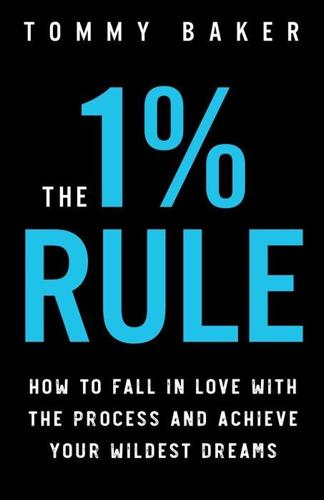
The 1% Rule: How to Fall in Love With the Process and Achieve Your Wildest Dreams
by
Tommy Baker
Published 18 Feb 2018
Using this question on a daily basis will prove priceless to you—if used with intention and clarity after you’ve done the work required to know where you’re going. PARKINSON’S LAW We’re all crammers. Human nature dictates we are, so your tendency to cram for your final exams in high school and college has likely carried on well into adulthood. Many times, we won’t even start until we can’t go one second longer and we have our backs up against the wall. Urgency in life matters but it must be used the right way, and without the constant rollercoaster we’ve all experienced. Parkinson’s Law (Parkinson 1955) is one of the most studied, researched, and used concepts in productivity for great reason.
…
COMPLACENCY KILLS PERSISTENCE HOW YOU DO ONE THING IS HOW YOU DO EVERYTHING CHAPTER 7: ENDURANCE ENDURANCE IS MESSY A DECADE OF OVERNIGHT SUCCESS YOUR MOUNTAIN IS YOURS FALL IN LOVE WITH DELAYED GRATIFICATION ALWAYS MOVING FORWARD TAKE NOTE ALONG THE JOURNEY CULTIVATING ENDURANCE CHAPTER 8: THE 1% BLUEPRINT THE 1% QUESTION PARKINSON’S LAW ANSWERING THE QUESTION E-MAIL AND SOCIAL MEDIA CAN WAIT AUDIT DELETION RESISTANCE DAILY GAME CHAPTER 9: CRAFT YOUR VISION LET GO PAINT YOUR MASTERPIECE NORTH STAR TEST DRIVING ARIZONA THE TIGHT ROPE SURRENDER CRAFTING YOUR VISION BELIEF IS THE SECRET SAUCE CHAPTER 10: REVERSE ENGINEER YOUR SUCCESS SCREW THE HOW WHAT WOULD HAVE TO HAPPEN?
…
You commit to cleaning your entire place on a Sunday, yet don’t start until it’s time to go to bed. We’ve all been there, and it can be outrageous how much we can get done at the last minute. However, this is not a long-term strategy for success. It’s stressful and usually leaves us exhausted the next day. What makes Parkinson’s Law powerful is that it mirrors a universal law where empty space will be filled by the lowest possible priority. One of my mentors, Dr. John Demartini, taught me this in Houston, Texas, once when he said: If you don’t fill your day with high-priority items, others will fill your day with low-priority items.

The 5 Types of Wealth: A Transformative Guide to Design Your Dream Life
by
Sahil Bloom
Published 4 Feb 2025
If you’re spending time thinking about your productivity system, you’re focusing on movement over progress. The simple index card strategy harnesses the core principles of focus and momentum to allow you to get more of what matters done. Always remember: Simple is beautiful. How to Eliminate Time Waste: Parkinson’s Law Pillar: Attention Parkinson’s law is the idea that work expands to fill the time allotted for its completion. It was formulated by British author Cyril Northcote Parkinson in a satirical essay in The Economist in 1955. While his piece was intended as a humorous critique of bureaucratic inefficiency, the principle is applicable to a range of situations, from personal time management to large-scale projects.
…
A few common Time Wealth anti-goals to avoid on your journey: Spending too much of my time on low-value, energy-draining activities Being so busy that I’m unable to prioritize time with the people who truly matter Losing the spontaneity in my life as I pursue my most important priorities Here are twelve proven systems for building Time Wealth. 1. The Time Wealth Hard Reset | Awareness 2. The Energy Calendar | Awareness and Attention 3. The Two-List Exercise | Awareness and Attention 4. The Eisenhower Matrix | Awareness and Attention 5. The Index Card To-Do System | Attention 6. Parkinson’s Law | Attention 7. The Anti-Procrastination System | Attention 8. The Flow State Boot-Up Sequence | Attention 9. Effective Delegation | Attention and Control 10. The Art of No | Control 11. The Four Types of Professional Time | Control 12. The Energy Creators | Control The Time Wealth Hard Reset Pillar: Awareness My entire life changed when I confronted the mathematical reality of the amount of time I had remaining with the people I loved most.
…
Have two days to complete an assignment and you work efficiently and get it done. Open time frames lead to a lot of movement and very little progress—the rocking-horse phenomenon of busywork culture. We tend to be more efficient and productive when constraints come into play. We also tend to focus on the important when pressed for time. You can leverage Parkinson’s law to be more efficient and effective in your professional and personal life: Establish time blocks that are shorter than you’re comfortable with for low-importance but necessary tasks. Use this artificial pressure to avoid procrastination and free up time for important, high-value tasks.
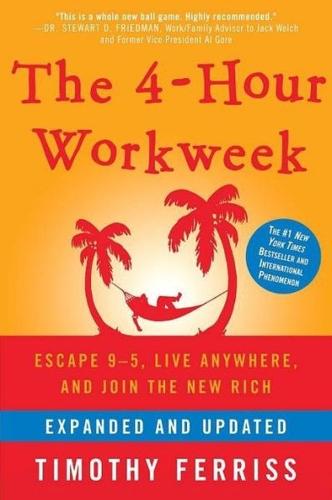
The 4-Hour Workweek: Escape 9-5, Live Anywhere, and Join the New Rich
by
Timothy Ferriss
Published 1 Jan 2007
It was based on a different company I had found, interviewed, and dissected with an intense all-nighter and enough caffeine to get an entire Olympic track team disqualified. It ended up being one of the best papers I’d written in four years, and I received an A. Before I left the classroom the previous day, Ed had given me some parting advice: Parkinson’s Law. Parkinson’s Law dictates that a task will swell in (perceived) importance and complexity in relation to the time allotted for its completion. It is the magic of the imminent deadline. If I give you 24 hours to complete a project, the time pressure forces you to focus on execution, and you have no choice but to do only the bare essentials.
…
As stated, you should have, at most, two primary goals or tasks per day. Do them separately from start to finish without distraction. Divided attention will result in more frequent interruptions, lapses in concentration, poorer net results, and less gratification. 9. Use Parkinson’s Law on a Macro and Micro Level. Use Parkinson’s Law to accomplish more in less time. Shorten schedules and deadlines to necessitate focused action instead of deliberation and procrastination. On a weekly and daily macro level, attempt to take Monday and/or Friday off, as well as leave work at 4 P.M. This will focus you to prioritize more effectively and quite possibly develop a social life.
…
That’s part of the process, but it should not take more than a month or two. It’s easy to get caught in a flood of minutiae, and the key to not feeling rushed is remembering that lack of time is actually lack of priorities. Take time to stop and smell the roses, or—in this case—to count the pea pods. The 9–5 Illusion and Parkinson’s Law I saw a bank that said “24-Hour Banking,” but I don’t have that much time. —STEVEN WRIGHT, comedian If you’re an employee, spending time on nonsense is, to some extent, not your fault. There is often no incentive to use time well unless you are paid on commission. The world has agreed to shuffle papers between 9:00 A.M. and 5:00 P.M., and since you’re trapped in the office for that period of servitude, you are compelled to create activities to fill that time.

The Personal MBA: A World-Class Business Education in a Single Volume
by
Josh Kaufman
Published 2 Feb 2011
We plan based on how much time we have, and when the deadline approaches, we start to make Choices and Trade-offs to do what must be done to complete the task by the deadline. Parkinson’s Law should not be considered carte blanche to set unreasonable deadlines. All projects take time—you certainly can’t build a skyscraper in a day or a factory in a week. The more complex the project, the more time it typically takes—to a point. Parkinson’s Law is best used as a Counterfactual Simulation question. What would it look like if you finished the project on a very aggressive time scale? If you had to build a skyscraper in a day, how would you go about doing it?
…
When creating your list of MITs, it’s useful to ask a Self-Elicitation question : “What are the two or three most important things that I need to do today? What are the things that—if I got them done today—would make a huge difference?” Write only those tasks on your MIT list, then try to get them done first thing in the morning. Combining this technique with Parkinson’s Law (discussed later) by setting an artificial deadline is extremely effective. If you set a goal to have all of your MITs done by 10:00 a.m., you’ll be amazed at how quickly you can complete the day’s most important tasks. Having a list of two or three MITs helps you maintain a Monoideal state by giving you permission to say no to interruptions that aren’t as important.
…
After doing a simulation, you’ll always come away with a greater understanding of what it takes to do something, or what would need to be true in order to make something work. Apply your mind to Counterfactual Simulation, and you’ll be absolutely astounded at how easy it is to accomplish some of the things that you assumed were simply dreams. SHARE THIS CONCEPT: http://book.personalmba.com/counterfactual-simulation/ Parkinson’s Law Work expands so as to fill the time available for its completion. —CYRIL NORTHCOTE PARKINSON, NAVAL HISTORIAN AND MANAGEMENT THEORIST In 1955, Cyril Northcote Parkinson wrote a humorous essay in the Economist based on his experience in the British civil service. In that essay, Parkinson proposed what became his eponymous law: “Work expands so as to fill the time available for its completion.”
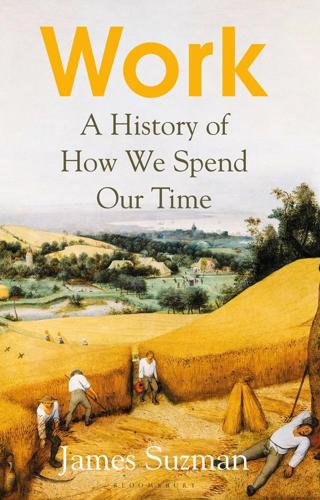
Work: A History of How We Spend Our Time
by
James Suzman
Published 2 Sep 2020
Graeber was by no means the first to notice the proliferation of pointless jobs in the burgeoning service sectors that characterise post-industrial societies. The tendency for organisational bureaucracies to balloon is now sometimes referred to as Parkinson’s Law, after Cyril Northcote Parkinson, who proposed it in a tongue-in-cheek article he published in The Economist in 1955. Based on his experiences in the notoriously flabby Colonial Service, Parkinson’s Law states that ‘work inevitably expands to fill the time available for its completion’, and correspondingly that bureaucracies will always generate enough internal work to appear busy and important enough to ensure their continued existence or growth without any corresponding expansion in output.
…
While it was very clearly not Parkinson’s intention when writing this article, the language he uses is remarkably reminiscent of that used by scientists like Schrödinger when describing the relationship between work, energy and life. According to Parkinson’s Law, for bureaucracies to stay alive and grow, they must continuously harvest energy, in the form of cash, and do work even if, like energetic masked weavers, the work serves no more purpose than expending energy. Parkinson’s Law may now only occasionally be invoked by CEOs when downsizing and by debt-laden governments sombrely demanding greater austerity, but it is nonetheless something that many in managerial roles are intuitively aware of, even if they haven’t a name to give it.
…
Graeber was by no means the first to notice the proliferation of pointless jobs in the burgeoning service sectors that characterise post-industrial societies. The tendency for organisational bureaucracies to balloon is now sometimes referred to as Parkinson’s Law, after Cyril Northcote Parkinson, who proposed it in a tongue-in-cheek article he published in The Economist in 1955. Based on his experiences in the notoriously flabby Colonial Service, Parkinson’s Law states that ‘work inevitably expands to fill the time available for its completion’, and correspondingly that bureaucracies will always generate enough internal work to appear busy and important enough to ensure their continued existence or growth without any corresponding expansion in output.

Super Thinking: The Big Book of Mental Models
by
Gabriel Weinberg
and
Lauren McCann
Published 17 Jun 2019
Department of, 97 just world hypothesis, 22 Kahneman, Daniel, 9, 30, 90 karoshi, 82 Kauffman Foundation, 122 keeping up with the Joneses, 210–11 key person insurance, 305 King, Martin Luther, Jr., 129, 225 KISS (Keep It Simple, Stupid), 10 knowledge, institutional, 257 knowns: known, 197 unknown, 198, 203 known unknowns, 197–98 Knox, Robert E., 91 Kodak, 302–3, 308–10, 312 Koenigswald, Gustav Heinrich Ralph von, 50 Kohl’s, 15 Kopelman, Josh, 301 Korea, 229, 231, 235, 238 Kristof, Nicholas, 254 Krokodil, 49 Kruger, Justin, 269 Kuhn, Thomas, 24 Kutcher, Ashton, 121 labor market, 283–84 laggards, 116–17 landlords, 178, 179, 182, 188 Laplace, Pierre-Simon, 132 large numbers, law of, 143–44 Latané, Bibb, 259 late majority, 116–17 lateral thinking, 201 law of diminishing returns, 81–83 law of diminishing utility, 81–82 law of inertia, 102–3, 105–8, 110, 112, 113, 119, 120, 129, 290, 296 law of large numbers, 143–44 law of small numbers, 143, 144 Lawson, Jerry, 289 lawsuits, 231 leadership, 248, 255, 260, 265, 271, 275, 276, 278–80 learned helplessness, 22–23 learning, 262, 269, 295 from past events, 271–72 learning curve, 269 Le Chatelier, Henri-Louis, 193 Le Chatelier’s principle, 193–94 left to their own devices, 275 Leibniz, Gottfried, 291 lemons into lemonade, 121 Lernaean Hydra, 51 Levav, Jonathan, 63 lever, 78 leverage, 78–80, 83, 115 high-leverage activities, 79–81, 83, 107, 113 leveraged buyout, 79 leveraging up, 78–79 Levitt, Steven, 44–45 Levitt, Theodore, 296 Lewis, Michael, 289 Lichtenstein, Sarah, 17 lightning, 145 liking, 216–17, 220 Lincoln, Abraham, 97 Lindy effect, 105, 106, 112 line in the sand, 238 LinkedIn, 7 littering, 41, 42 Lloyd, William, 37 loans, 180, 182–83 lobbyists, 216, 306 local optimum, 195–96 lock-in, 305 lock in your gains, 90 long-term negative scenarios, 60 loose versus tight, in organizational culture, 274 Lorenz, Edward, 121 loss, 91 loss aversion, 90–91 loss leader strategy, 236–37 lost at sea, 68 lottery, 85–86, 126, 145 low-context communication, 273–74 low-hanging fruit, 81 loyalists versus mercenaries, 276–77 luck, 128 making your own, 122 luck surface area, 122, 124, 128 Luft, Joseph, 196 LuLaRoe, 217 lung cancer, 133–34, 173 Lyautey, Hubert, 276 Lyft, ix, 288 Madoff, Bernie, 232 magnetic resonance imaging (MRI), 291 magnets, 194 maker’s schedule versus manager’s schedule, 277–78 Making of Economic Society, The (Heilbroner), 49 mammograms, 160–61 management debt, 56 manager’s schedule versus maker’s schedule, 277–78 managing to the person, 255 Manhattan Project, 195 Man in the High Castle, The (Dick), 201 manipulative insincerity, 264 man-month, 279 Mansfield, Peter, 291 manufacturer’s suggested retail price (MSRP), 15 margin of error, 154 markets, 42–43, 46–47, 106 failure in, 47–49 labor, 283–84 market norms versus social norms, 222–24 market power, 283–85, 312 product/market fit, 292–96, 302 secondary, 281–82 winner-take-most, 308 marriage: divorce, 231, 305 same-sex, 117, 118 Maslow, Abraham, 177, 270–71 Maslow’s hammer, xi, 177, 255, 297, 317 Maslow’s hierarchy of needs, 270–71 mathematics, ix–x, 3, 4, 132, 178 Singapore math, 23–24 matrices, 2 × 2, 125–26 consensus-contrarian, 285–86, 290 consequence-conviction, 265–66 Eisenhower Decision Matrix, 72–74, 89, 124, 125 of knowns and unknowns, 197–98 payoff, 212–15, 238 radical candor, 263–64 scatter plot on top of, 126 McCain, John, 241 mean, 146, 149, 151 regression to, 146, 286 standard deviation from, 149, 150–51, 154 variance from, 149 measles, 39, 40 measurable target, 49–50 median, 147 Medicare, 54–55 meetings, 113 weekly one-on-one, 262–63 Megginson, Leon, 101 mental models, vii–xii, 2, 3, 31, 35, 65, 131, 289, 315–17 mentorship, 23, 260, 262, 264, 265 mercenaries versus loyalists, 276–77 Merck, 283 merry-go-round, 108 meta-analysis, 172–73 Metcalfe, Robert, 118 Metcalfe’s law, 118 #MeToo movement, 113 metrics, 137 proxy, 139 Michaels, 15 Microsoft, 241 mid-mortems, 92 Miklaszewski, Jim, 196 Milgram, Stanley, 219, 220 military, 141, 229, 279, 294, 300 milkshakes, 297 Miller, Reggie, 246 Mills, Alan, 58 Mindset: The New Psychology of Success (Dweck), 266 mindset, fixed, 266–67, 272 mindset, growth, 266–67 minimum viable product (MVP), 7–8, 81, 294 mirroring, 217 mission, 276 mission statement, 68 MIT, 53, 85 moats, 302–5, 307–8, 310, 312 mode, 147 Moltke, Helmuth von, 7 momentum, 107–10, 119, 129 Monday morning quarterbacking, 271 Moneyball (Lewis), 289 monopolies, 283, 285 Monte Carlo fallacy, 144 Monte Carlo simulation, 195 Moore, Geoffrey, 311 moral hazard, 43–45, 47 most respectful interpretation (MRI), 19–20 moths, 99–101 Mountain Dew, 35 moving target, 136 multiple discovery, 291–92 multiplication, ix, xi multitasking, 70–72, 74, 76, 110 Munger, Charlie, viii, x–xi, 30, 286, 318 Murphy, Edward, 65 Murphy’s law, 64–65, 132 Musk, Elon, 5, 302 mutually assured destruction (MAD), 231 MVP (minimum viable product), 7–8, 81, 294 Mylan, 283 mythical man-month, 279 name-calling, 226 NASA, 4, 32, 33 Nash, John, 213 Nash equilibrium, 213–14, 226, 235 National Football League (NFL), 225–26 National Institutes of Health, 36 National Security Agency, 52 natural selection, 99–100, 102, 291, 295 nature versus nurture, 249–50 negative compounding, 85 negative externalities, 41–43, 47 negative returns, 82–83, 93 negotiations, 127–28 net benefit, 181–82, 184 Netflix, 69, 95, 203 net present value (NPV), 86, 181 network effects, 117–20, 308 neuroticism, 250 New Orleans, La., 41 Newport, Cal, 72 news headlines, 12–13, 221 newspapers, 106 Newsweek, 290 Newton, Isaac, 102, 291 New York Times, 27, 220, 254 Nielsen Holdings, 217 ninety-ninety rule, 89 Nintendo, 296 Nobel Prize, 32, 42, 220, 291, 306 nocebo effect, 137 nodes, 118, 119 No Fly List, 53–54 noise and signal, 311 nonresponse bias, 140, 142, 143 normal distribution (bell curve), 150–52, 153, 163–66, 191 North Korea, 229, 231, 238 north star, 68–70, 275 nothing in excess, 60 not ready for prime time, 242 “now what” questions, 291 NPR, 239 nuclear chain reaction, viii, 114, 120 nuclear industry, 305–6 nuclear option, 238 Nuclear Regulatory Commission (NRC), 305–6 nuclear weapons, 114, 118, 195, 209, 230–31, 233, 238 nudging, 13–14 null hypothesis, 163, 164 numbers, 130, 146 large, law of, 143–44 small, law of, 143, 144 see also data; statistics nurses, 284 Oakland Athletics, 289 Obama, Barack, 64, 241 objective versus subjective, in organizational culture, 274 obnoxious aggression, 264 observe, orient, decide, act (OODA), 294–95 observer effect, 52, 54 observer-expectancy bias, 136, 139 Ockham’s razor, 8–10 Odum, William E., 38 oil, 105–6 Olympics, 209, 246–48, 285 O’Neal, Shaquille, 246 one-hundred-year floods, 192 Onion, 211–12 On the Origin of Species by Means of Natural Selection (Darwin), 100 OODA loop, 294–95 openness to experience, 250 Operation Ceasefire, 232 opinion, diversity of, 205, 206 opioids, 36 opportunity cost, 76–77, 80, 83, 179, 182, 188, 305 of capital, 77, 179, 182 optimistic probability bias, 33 optimization, premature, 7 optimums, local and global, 195–96 optionality, preserving, 58–59 Oracle, 231, 291, 299 order, 124 balance between chaos and, 128 organizations: culture in, 107–8, 113, 273–80, 293 size and growth of, 278–79 teams in, see teams ostrich with its head in the sand, 55 out-group bias, 127 outliers, 148 Outliers (Gladwell), 261 overfitting, 10–11 overwork, 82 Paine, Thomas, 221–22 pain relievers, 36, 137 Pampered Chef, 217 Pangea, 24–25 paradigm shift, 24, 289 paradox of choice, 62–63 parallel processing, 96 paranoia, 308, 309, 311 Pareto, Vilfredo, 80 Pareto principle, 80–81 Pariser, Eli, 17 Parkinson, Cyril, 74–75, 89 Parkinson’s law, 89 Parkinson’s Law (Parkinson), 74–75 Parkinson’s law of triviality, 74, 89 passwords, 94, 97 past, 201, 271–72, 309–10 Pasteur, Louis, 26 path dependence, 57–59, 194 path of least resistance, 88 Patton, Bruce, 19 Pauling, Linus, 220 payoff matrix, 212–15, 238 PayPal, 72, 291, 296 peak, 105, 106, 112 peak oil, 105 Penny, Jonathon, 52 pent-up energy, 112 perfect, 89–90 as enemy of the good, 61, 89–90 personality traits, 249–50 person-month, 279 perspective, 11 persuasion, see influence models perverse incentives, 50–51, 54 Peter, Laurence, 256 Peter principle, 256, 257 Peterson, Tom, 108–9 Petrified Forest National Park, 217–18 Pew Research, 53 p-hacking, 169, 172 phishing, 97 phones, 116–17, 290 photography, 302–3, 308–10 physics, x, 114, 194, 293 quantum, 200–201 pick your battles, 238 Pinker, Steven, 144 Pirahã, x Pitbull, 36 pivoting, 295–96, 298–301, 308, 311, 312 placebo, 137 placebo effect, 137 Planck, Max, 24 Playskool, 111 Podesta, John, 97 point of no return, 244 Polaris, 67–68 polarity, 125–26 police, in organizations and projects, 253–54 politics, 70, 104 ads and statements in, 225–26 elections, 206, 218, 233, 241, 271, 293, 299 failure and, 47 influence in, 216 predictions in, 206 polls and surveys, 142–43, 152–54, 160 approval ratings, 152–54, 158 employee engagement, 140, 142 postmortems, 32, 92 Potemkin village, 228–29 potential energy, 112 power, 162 power drills, 296 power law distribution, 80–81 power vacuum, 259–60 practice, deliberate, 260–62, 264, 266 precautionary principle, 59–60 Predictably Irrational (Ariely), 14, 222–23 predictions and forecasts, 132, 173 market for, 205–7 superforecasters and, 206–7 PredictIt, 206 premature optimization, 7 premises, see principles pre-mortems, 92 present bias, 85, 87, 93, 113 preserving optionality, 58–59 pressure point, 112 prices, 188, 231, 299 arbitrage and, 282–83 bait and switch and, 228, 229 inflation in, 179–80, 182–83 loss leader strategy and, 236–37 manufacturer’s suggested retail, 15 monopolies and, 283 principal, 44–45 principal-agent problem, 44–45 principles (premises), 207 first, 4–7, 31, 207 prior, 159 prioritizing, 68 prisoners, 63, 232 prisoner’s dilemma, 212–14, 226, 234–35, 244 privacy, 55 probability, 132, 173, 194 bias, optimistic, 33 conditional, 156 probability distributions, 150, 151 bell curve (normal), 150–52, 153, 163–66, 191 Bernoulli, 152 central limit theorem and, 152–53, 163 fat-tailed, 191 power law, 80–81 sample, 152–53 pro-con lists, 175–78, 185, 189 procrastination, 83–85, 87, 89 product development, 294 product/market fit, 292–96, 302 promotions, 256, 275 proximate cause, 31, 117 proxy endpoint, 137 proxy metric, 139 psychology, 168 Psychology of Science, The (Maslow), 177 Ptolemy, Claudius, 8 publication bias, 170, 173 public goods, 39 punching above your weight, 242 p-values, 164, 165, 167–69, 172 Pygmalion effect, 267–68 Pyrrhus, King, 239 Qualcomm, 231 quantum physics, 200–201 quarantine, 234 questions: now what, 291 what if, 122, 201 why, 32, 33 why now, 291 quick and dirty, 234 quid pro quo, 215 Rabois, Keith, 72, 265 Rachleff, Andy, 285–86, 292–93 radical candor, 263–64 Radical Candor (Scott), 263 radiology, 291 randomized controlled experiment, 136 randomness, 201 rats, 51 Rawls, John, 21 Regan, Ronald, 183 real estate agents, 44–45 recessions, 121–22 reciprocity, 215–16, 220, 222, 229, 289 recommendations, 217 red line, 238 referrals, 217 reframe the problem, 96–97 refugee asylum cases, 144 regression to the mean, 146, 286 regret, 87 regulations, 183–84, 231–32 regulatory capture, 305–7 reinventing the wheel, 92 relationships, 53, 55, 63, 91, 111, 124, 159, 271, 296, 298 being locked into, 305 dating, 8–10, 95 replication crisis, 168–72 Republican Party, 104 reputation, 215 research: meta-analysis of, 172–73 publication bias and, 170, 173 systematic reviews of, 172, 173 see also experiments resonance, 293–94 response bias, 142, 143 responsibility, diffusion of, 259 restaurants, 297 menus at, 14, 62 RetailMeNot, 281 retaliation, 238 returns: diminishing, 81–83 negative, 82–83, 93 reversible decisions, 61–62 revolving door, 306 rewards, 275 Riccio, Jim, 306 rise to the occasion, 268 risk, 43, 46, 90, 288 cost-benefit analysis and, 180 de-risking, 6–7, 10, 294 moral hazard and, 43–45, 47 Road Ahead, The (Gates), 69 Roberts, Jason, 122 Roberts, John, 27 Rogers, Everett, 116 Rogers, William, 31 Rogers Commission Report, 31–33 roles, 256–58, 260, 271, 293 roly-poly toy, 111–12 root cause, 31–33, 234 roulette, 144 Rubicon River, 244 ruinous empathy, 264 Rumsfeld, Donald, 196–97, 247 Rumsfeld’s Rule, 247 Russia, 218, 241 Germany and, 70, 238–39 see also Soviet Union Sacred Heart University (SHU), 217, 218 sacrifice play, 239 Sagan, Carl, 220 sales, 81, 216–17 Salesforce, 299 same-sex marriage, 117, 118 Sample, Steven, 28 sample distribution, 152–53 sample size, 143, 160, 162, 163, 165–68, 172 Sánchez, Ricardo, 234 sanctions and fines, 232 Sanders, Bernie, 70, 182, 293 Sayre, Wallace, 74 Sayre’s law, 74 scarcity, 219, 220 scatter plot, 126 scenario analysis (scenario planning), 198–99, 201–3, 207 schools, see education and schools Schrödinger, Erwin, 200 Schrödinger’s cat, 200 Schultz, Howard, 296 Schwartz, Barry, 62–63 science, 133, 220 cargo cult, 315–16 Scientific Autobiography and other Papers (Planck), 24 scientific evidence, 139 scientific experiments, see experiments scientific method, 101–2, 294 scorched-earth tactics, 243 Scott, Kim, 263 S curves, 117, 120 secondary markets, 281–82 second law of thermodynamics, 124 secrets, 288–90, 292 Securities and Exchange Commission, U.S., 228 security, false sense of, 44 security services, 229 selection, adverse, 46–47 selection bias, 139–40, 143, 170 self-control, 87 self-fulfilling prophecies, 267 self-serving bias, 21, 272 Seligman, Martin, 22 Semmelweis, Ignaz, 25–26 Semmelweis reflex, 26 Seneca, Marcus, 60 sensitivity analysis, 181–82, 185, 188 dynamic, 195 Sequoia Capital, 291 Sessions, Roger, 8 sexual predators, 113 Shakespeare, William, 105 Sheets Energy Strips, 36 Shermer, Michael, 133 Shirky, Clay, 104 Shirky principle, 104, 112 Short History of Nearly Everything, A (Bryson), 50 short-termism, 55–56, 58, 60, 68, 85 side effects, 137 signal and noise, 311 significance, 167 statistical, 164–67, 170 Silicon Valley, 288, 289 simulations, 193–95 simultaneous invention, 291–92 Singapore math, 23–24 Sir David Attenborough, RSS, 35 Skeptics Society, 133 sleep meditation app, 162–68 slippery slope argument, 235 slow (high-concentration) thinking, 30, 33, 70–71 small numbers, law of, 143, 144 smartphones, 117, 290, 309, 310 smoking, 41, 42, 133–34, 139, 173 Snap, 299 Snowden, Edward, 52, 53 social engineering, 97 social equality, 117 social media, 81, 94, 113, 217–19, 241 Facebook, 18, 36, 94, 119, 219, 233, 247, 305, 308 Instagram, 220, 247, 291, 310 YouTube, 220, 291 social networks, 117 Dunbar’s number and, 278 social norms versus market norms, 222–24 social proof, 217–20, 229 societal change, 100–101 software, 56, 57 simulations, 192–94 solitaire, 195 solution space, 97 Somalia, 243 sophomore slump, 145–46 South Korea, 229, 231, 238 Soviet Union: Germany and, 70, 238–39 Gosplan in, 49 in Cold War, 209, 235 space exploration, 209 spacing effect, 262 Spain, 243–44 spam, 37, 161, 192–93, 234 specialists, 252–53 species, 120 spending, 38, 74–75 federal, 75–76 spillover effects, 41, 43 sports, 82–83 baseball, 83, 145–46, 289 football, 226, 243 Olympics, 209, 246–48, 285 Spotify, 299 spreadsheets, 179, 180, 182, 299 Srinivasan, Balaji, 301 standard deviation, 149, 150–51, 154 standard error, 154 standards, 93 Stanford Law School, x Starbucks, 296 startup business idea, 6–7 statistics, 130–32, 146, 173, 289, 297 base rate in, 157, 159, 160 base rate fallacy in, 157, 158, 170 Bayesian, 157–60 confidence intervals in, 154–56, 159 confidence level in, 154, 155, 161 frequentist, 158–60 p-hacking in, 169, 172 p-values in, 164, 165, 167–69, 172 standard deviation in, 149, 150–51, 154 standard error in, 154 statistical significance, 164–67, 170 summary, 146, 147 see also data; experiments; probability distributions Staubach, Roger, 243 Sternberg, Robert, 290 stock and flow diagrams, 192 Stone, Douglas, 19 stop the bleeding, 234 strategy, 107–8 exit, 242–43 loss leader, 236–37 pivoting and, 295–96, 298–301, 308, 311, 312 tactics versus, 256–57 strategy tax, 103–4, 112 Stiglitz, Joseph, 306 straw man, 225–26 Streisand, Barbra, 51 Streisand effect, 51, 52 Stroll, Cliff, 290 Structure of Scientific Revolutions, The (Kuhn), 24 subjective versus objective, in organizational culture, 274 suicide, 218 summary statistics, 146, 147 sunk-cost fallacy, 91 superforecasters, 206–7 Superforecasting (Tetlock), 206–7 super models, viii–xii super thinking, viii–ix, 3, 316, 318 surface area, 122 luck, 122, 124, 128 surgery, 136–37 Surowiecki, James, 203–5 surrogate endpoint, 137 surveys, see polls and surveys survivorship bias, 140–43, 170, 272 sustainable competitive advantage, 283, 285 switching costs, 305 systematic review, 172, 173 systems thinking, 192, 195, 198 tactics, 256–57 Tajfel, Henri, 127 take a step back, 298 Taleb, Nassim Nicholas, 2, 105 talk past each other, 225 Target, 236, 252 target, measurable, 49–50 taxes, 39, 40, 56, 104, 193–94 T cells, 194 teams, 246–48, 275 roles in, 256–58, 260 size of, 278 10x, 248, 249, 255, 260, 273, 280, 294 Tech, 83 technical debt, 56, 57 technologies, 289–90, 295 adoption curves of, 115 adoption life cycles of, 116–17, 129, 289, 290, 311–12 disruptive, 308, 310–11 telephone, 118–19 temperature: body, 146–50 thermostats and, 194 tennis, 2 10,000-Hour Rule, 261 10x individuals, 247–48 10x teams, 248, 249, 255, 260, 273, 280, 294 terrorism, 52, 234 Tesla, Inc., 300–301 testing culture, 50 Tetlock, Philip E., 206–7 Texas sharpshooter fallacy, 136 textbooks, 262 Thaler, Richard, 87 Theranos, 228 thermodynamics, 124 thermostats, 194 Thiel, Peter, 72, 288, 289 thinking: black-and-white, 126–28, 168, 272 convergent, 203 counterfactual, 201, 272, 309–10 critical, 201 divergent, 203 fast (low-concentration), 30, 70–71 gray, 28 inverse, 1–2, 291 lateral, 201 outside the box, 201 slow (high-concentration), 30, 33, 70–71 super, viii–ix, 3, 316, 318 systems, 192, 195, 198 writing and, 316 Thinking, Fast and Slow (Kahneman), 30 third story, 19, 92 thought experiment, 199–201 throwing good money after bad, 91 throwing more money at the problem, 94 tight versus loose, in organizational culture, 274 timeboxing, 75 time: management of, 38 as money, 77 work and, 89 tipping point, 115, 117, 119, 120 tit-for-tat, 214–15 Tōgō Heihachirō, 241 tolerance, 117 tools, 95 too much of a good thing, 60 top idea in your mind, 71, 72 toxic culture, 275 Toys “R” Us, 281 trade-offs, 77–78 traditions, 275 tragedy of the commons, 37–40, 43, 47, 49 transparency, 307 tribalism, 28 Trojan horse, 228 Truman Show, The, 229 Trump, Donald, 15, 206, 293 Trump: The Art of the Deal (Trump and Schwartz), 15 trust, 20, 124, 215, 217 trying too hard, 82 Tsushima, Battle of, 241 Tupperware, 217 TurboTax, 104 Turner, John, 127 turn lemons into lemonade, 121 Tversky, Amos, 9, 90 Twain, Mark, 106 Twitter, 233, 234, 296 two-front wars, 70 type I error, 161 type II error, 161 tyranny of small decisions, 38, 55 Tyson, Mike, 7 Uber, 231, 275, 288, 290 Ulam, Stanislaw, 195 ultimatum game, 224, 244 uncertainty, 2, 132, 173, 180, 182, 185 unforced error, 2, 10, 33 unicorn candidate, 257–58 unintended consequences, 35–36, 53–55, 57, 64–65, 192, 232 Union of Concerned Scientists (UCS), 306 unique value proposition, 211 University of Chicago, 144 unknown knowns, 198, 203 unknowns: known, 197–98 unknown, 196–98, 203 urgency, false, 74 used car market, 46–47 U.S.
…
Sayre’s law, named after political scientist Wallace Sayre, offers that in any dispute the intensity of feeling is inversely proportional to the value of the issues at stake. A related concept is Parkinson’s law of triviality, named after naval historian Cyril Parkinson, which states that organizations tend to give disproportionate weight to trivial issues. Both of these concepts explain how group dynamics can lead the group to focus on the wrong things. In his 1957 book Parkinson’s Law, Parkinson presents an example of a budget committee considering an atomic reactor and a bike shed, offering that “the time spent on any item of the agenda will be in inverse proportion to the sum involved.”
…
By contrast, a realistic, time-bound, and specific gym commitment might be: “I will go to the gym Wednesday and Sunday mornings with my friend for the next three months, doing twenty minutes of running and twenty minutes of weight training, and I will give my friend twenty dollars each time I miss a date.” Once you overcome procrastination and are actually making consistent progress toward a goal, the next trap you can fall into is failing to plan your time effectively. Parkinson’s law (yes, another law by the same Parkinson of Parkinson’s law of triviality) states that “work expands so as to fill the time available for its completion.” Does that ring true for you? It certainly does for us. When your top priority has a deadline far in the future, it doesn’t mean that you need to spend all your time on it until the deadline.
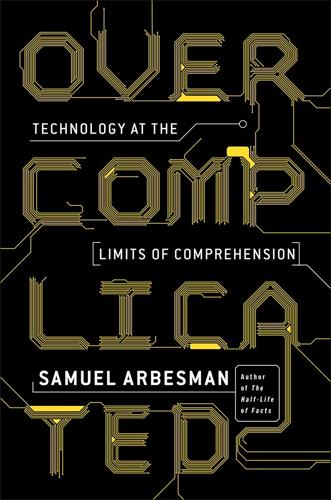
Overcomplicated: Technology at the Limits of Comprehension
by
Samuel Arbesman
Published 18 Jul 2016
pages in the Code of Federal Regulations: Susan E. Dudley and Jerry Brito, Regulation: A Primer, 2nd ed. (Arlington, VA, and Washington, DC: Mercatus Center, George Mason University, and The George Washington University Regulatory Studies Center, 2012), 5, http://mercatus.org/publication/regulation-primer. known as Parkinson’s Law: “Parkinson’s Law,” The Economist, November 19, 1955, accessed February 26, 2015, http://www.economist.com/node/14116121. This relationship does not seem to hold when a country is at war. those in the software world have enshrined this idea: See Meir M. Lehman, “Programs, Life Cycles, and Laws of Software Evolution,” Proceedings of the IEEE 68, no. 9 (1980): 1060–76.
…
For example, if you look only at the number of pages in the Code of Federal Regulations—the collection of rules from these many agencies—this number has gone from fewer than 25,000 to more than 165,000 in the past fifty years. We see a similar growth in bureaucracies and administration. In an article from the 1950s, The Economist proposed something known as Parkinson’s Law, which is a quantitative description of the multiplication of bureaucrats over time. While the article is somewhat tongue-in-cheek, it is buttressed with data, and concludes that governmental bureaucracies are essentially compelled to grow at the rate of about 5–6 percent more people per year.
…
P., 40 machine translation, 57–59, 207 Macintosh computers, 161–63 magic crayons, 162–63 Maimonides, Moses, 151–52, 156 Mandel, Michael, 46 Mandelbrot, Benoit, 130 mathematics, limitative theorems in, 175 Mauries, Patrick, 87–88 Maxwell, James Clerk, 114–15 medicine, specialization in, 91 memory, human, long-term, 74–77 microbes, synthetic, 49 Microsoft, 106–7 Microsoft Office, 16 Microsoft Research, 62 Microsoft Windows, 35, 98 Microsoft Word, 42 Minecraft, 132 “miscellaneous,” concept of, 108–10, 140–41, 143 models, see scientific models modules, 63–65, 208 Moravec, Hans, 230 multitasking, 76 mutagenesis, 124–25 mutations, 109–10, 120 Myers, Brad A., 159 Myst, 162 mystery: human comprehension and, 173–74 under- vs. overemphasis on, 171 wonder vs., 170–76 Mythical Man-Month, The (Brooks), 38 naches: definition of, 167–68 as response to technological complexity, 168–69, 174 natural world: complexity in, 107–10 diversity of, 113–14 interconnection of technology and, 3 scientific study of, 107–10 search for unity in, see physics thinking Netflix, 5, 59, 107, 126 Newark, N.J., 46 Newton, Isaac, 89, 112, 114, 152, 221 New York Stock Exchange, 1, 187 Niagara Falls Museum, 88 nonlinear systems, 78–79 Norman, Don, 158–59, 172 Northeast Blackout (2003), 48, 128 Norton, Quinn, 22 Norvig, Peter, 56 “novelty detection,” 127 nuclear power plants, 126 Oremus, Will, 189 outliers, 76–77, 137 see also edge cases Out of Control (Kelly), 83 overclocking, 76 Oxford English Dictionary, 55 Pac-Man, 160 Parkinson’s Law, 41 particle accelerators, 2 pattern-making mind, 146–47 penicillin, 124 percolation, 133–34 personbyte, 212 pharmaceutical research, 125 Philosophical Transactions, 111 philosophy of technology, 79–81 Photoshop, 35 physical systems, biological systems vs., 116–17 physics thinking, 112–13, 121 abstraction in, 115–16, 121–22, 128 aesthetics and, 113, 114 in ancient Greece, 138–40 biological thinking vs., 114–16, 137–38, 142–43, 222 technological complexity and, 122, 127–28 unity in, 117 Pinker, Steven, 73 poliovirus, 49 polymaths, 86–89, 93, 144 Post, David, 61 Postal Service, U.S., 34 posterior hippocampus, 78 power grid, cascading blackouts in, 47–48, 128 power laws, 55–56, 206 pre-Socratics, 138–40 programmers, programming: computer vs. human counting in, 69–70, 209 differences of scale and, 50–51 languages in, 23 lessons from, 160–63 recursion and, 71 as valuable skill, 43 see also software Programming Pearls, 104–5 progress, overoptimistic view of, 12–13 progress bars, 159–60 Progressive Policy Institute, 46 Ptak, John, 147–48 Quabbin Reservoir, 101 radiation machines, overdose failures of, 67–69 radical novelty, 3, 50 railroads, 2 RAM, 110 Ramanujan, Srinivasa, 77, 78 recursion: in language, 71–72, 75 in programming, 71 refactoring, 200, 201 regulatory accumulation, 46–47 Renaissance man, 86–89, 93, 144 see also generalists resilience, in technological complexity, 16 resolution, levels of, 127–28 RNA interference (RNAi), 123–24, 141 road system, complexity of, 16 Rosenberg, Scott, 69 Royal Society, 111 scale, difference of, 50–51 Schwarz, Barbara, 10 scientific method, 109 limits to, 153 scientific models, 131 edge cases in, 54–62, 207 interconnection of, 2 as means of understanding complex systems, 165–67 software bugs in, 97 Scientific Reports, 4 Scientific Revolution, optimistic view of human comprehension in, 152–53 security, software bugs and, 97–98 Seinfeld (TV show), 130 sentences: garden path, 74–75 parsing of, 73–74 sewage systems, complexity of, 101 Shakespeare, William, 55 Shatner, William, 160 Shepard, Alan, 200 sickle-cell anemia, 128 SimCity, 159, 166 simulations, see scientific models software: accretion in, 37–38, 41–42, 44 in automobiles, 10–11, 13, 45, 65, 100, 174 branch points in, 80–81 complexity of, 43–44, 59, 68–69 “dark code” in, 21–22 “hygiene” in, 65, 81 interaction in, 44–45 kluges in, 35 legacy code in, see legacy code, legacy systems modules in, 63–64 multidisciplinary teams and, 92 testing of, 107 see also programmers, programming software bugs, 1, 45, 65, 156 complexity and, 96–97 dangerous consequences of, 67–69 debugging of, 103–7 in Galaga, 95–96, 97, 216–17 inevitability of, 174–75 in Microsoft Windows, 98 in scientific models, 97–98 security and, 97–98 in Vancouver Stock Exchange index, 105–6 soldiers, “losing the bubble” and, 70 sophistication, in technological complexity, 16 space shuttle missions, outdated computer systems used by, 38 spaghetti code, 44–45, 201 spatial memory, 78 special effects, greeblies in, 130 specialization: abstraction and, 24, 26–27 collaboration and, 91–92 complexity and, 85–93 generalists and, 146 as rewarded by job market, 144 technological complexity and, 142 Stephenson, Neal, 128–29 stock market systems: complexity of, 4 crashes in, 1, 4, 25, 187 interconnectivity of, 2, 24–26 laws and rules of, 25 and limits of human comprehension, 26–27, 189 storytelling, biological and physical thinking in, 129–30 strangeness, as impetus for scientific discovery, 124, 140–41 subitizing, 75 supply chains, interconnection of, 2 Supreme Court, U.S., 40 Symons, John, 79–80, 97 Systems Bible, The (Gall), 157–58 tax code, 16, 40, 42 Tay (chatbot), 106–7 technological complexity: abstraction and, 23–28, 81, 121–22 accretion in, 130–31 awe as response to, 6, 7, 154–55, 156, 165, 174 biological thinking and, 116–49, 158, 174 branch points and, 80–81 evolution of, 127, 137–38 as examples of human ingenuity, 4 fear as response to, 5, 7, 154–55, 156, 165 “field biologists” for, 123, 126, 127, 132 humility as response to, 155–56, 158, 165, 167, 170, 174, 176 impact of computer on, 3 inevitability of, 42 interconnectivity in, 2, 47–48 interdependence in, 47–48 interoperability in, 47–48, 64–65 interpreters of, 166–67, 229 kluges as inevitable in, 34–36, 127, 128, 154, 173–74 and limits of human comprehension, 1–7, 16–29, 69–70, 80–81, 153–54, 169–70, 175–76 misunderstandings about, 68–69 models as means of understanding, 165–67 naches as response to, 168–69, 174 new ways of thinking about, 6–7, 28–29, 163–67, 176 optimal interoperability in, 62–63 pervasiveness of, 15–16 physics thinking and, 122, 127–28 rapid growth of, 173 resilience in, 16 sophistication in, 16 specialization and, 142 unexpected behavior in, see unexpected behavior user interfaces and, 159 wonder vs. mystery in comprehension of, 170–76 see also complexity, complex systems technological werewolves, 93, 97, 102 technology: cost of construction vs. cost of failure in, 48–50 interconnection of natural world and, 3–4 “natural history” of, 103–4 philosophy of, 79–81 self-contained ecosystems in, 4 Teece, David, 144 Thales, 139 Theory of Everything, 113 Therac-25, overdose failures of, 67–69 Three Mile Island nuclear disaster, 12, 126 time zones, 2, 51–52 tinkering, 118, 125–26, 127, 132, 191 Torvalds, Linus, 102 Toyota automobiles: massively complex software in, 11, 45, 65 unintended acceleration of, 10–11, 13, 65, 174 Traffic Alert and Collision Avoidance System (TCAS), 18–19 translation software, 57–59, 207 triumphalism, 153, 156 T-shaped individuals, 143–44, 146 Tubes (Blum), 101–2 TurboTax, 160 Turing, Alan, 96, 175 Twitter, 106 unexpected behavior, 4, 18–20, 95–110 accretion and, 38 in biology, 109–10, 123–24 complexity and, 93, 96–97, 98–99, 192 debugging and, 103–4 deliberate inducing of, 124–25 edge cases and, 99–100 inevitability of, 157, 174–75 interconnectivity and, 11–12 as learning experience, 102–7, 123–24, 219–20 and limits of human comprehension, 18–22, 96–97, 98 “magical” explanation for, 20–22 modules and, 64 of software, see software bugs of Toyota automobiles, 10–11, 13, 65, 174 United Airlines, 1 United States Code, 33–34, 64, 136–37 unity, search for, see physics thinking unthinkable present, 176 user interfaces, 159–60, 163 Valéry, Paul, 193 Vancouver Stock Exchange stock index, software bug in, 105–6 Wall Street Journal, 1, 187 water supply systems, complexity of, 101, 102 Watson, 169 Watts, Duncan, 62 weather science, 148, 165 Weber, Max, 13 websites, interconnection of, 2 Wells, H.

Do Nothing: How to Break Away From Overworking, Overdoing, and Underliving
by
Celeste Headlee
Published 10 Mar 2020
Advances in computing and communication tools mean it takes much less time to do many jobs, and yet we’re still stuck slogging away for hours on end as though the Digital Revolution never happened. Corporate management still has a nineteenth-century mind-set in a twenty-first-century workplace. This state of affairs is partly explained by Parkinson’s Law: “Work expands so as to fill the time available for its completion.” That’s not a scientific principle but an adage first expressed by the historian Cyril Northcote. That means when we are contracted to work eight hours a day but only have five hours’ worth of work, we’ll stretch out the tasks in order to make them fill the time available, like a cubic foot of nitrogen expanding to fill an entire house.
…
“Just as the eight-hour day opened our way to prosperity, so the five-day week will open our way to a still greater prosperity.” Remember, Ford didn’t invent the car. His greatest innovations were connected to increases in efficiency, and he simply discovered that long hours are inefficient. Nearly a century later, Ford’s conclusion has been proved correct over and over again. It is Parkinson’s Law made plain: Work expands to fit the time available. So if you know you only have two hours to write an agenda, research shows that task will take two hours. If you have four hours to do it, that same task will suddenly require twice as much time. “General recognition of this fact,” wrote C. Northcote Parkinson, for whom the law is named, “is shown in the proverbial phrase ‘It is the busiest man who has time to spare.’ ” Perhaps the reason long hours are unhelpful is that human brains are not designed to put in excessive hours of uninterrupted work.
…
“buying time promotes happiness”: Ashley V. Whillans et al., “Buying Time Promotes Happiness,” Proceedings of the National Academy of Sciences, August 8, 2017. “We know from our experience”: Ford, “Why I Favor Five Days’ Work with Six Days’ Pay.” “General recognition of this fact”: C. Northcote Parkinson, Parkinson’s Law (London: John Murray, 1958), 4. They found that those who put in excessive hours: Raymond Van Zelst and William Kerr, “Some Correlates of Technical and Scientific Productivity,” Journal of Abnormal and Social Psychology, October 1951. Historians mostly agree the legend: Paul Garon, “John Henry: The Ballad and the Legend,” The New Antiquarian, the blog of the International League of Antiquarian Booksellers, December 14, 2009.
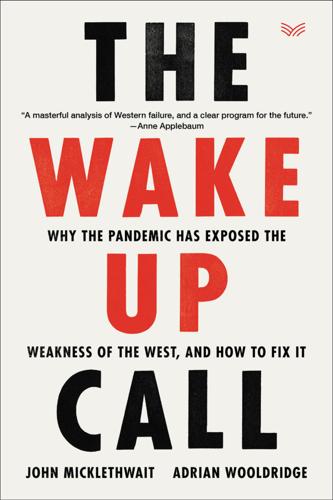
The Wake-Up Call: Why the Pandemic Has Exposed the Weakness of the West, and How to Fix It
by
John Micklethwait
and
Adrian Wooldridge
Published 1 Sep 2020
The philosophy was, as one Labor intellectual put it, that “the gentleman in Whitehall really does know better what is good for people than the people know themselves.” And, with the same principle applying to gentlemen (and women) in Bonn, Paris, and Rome, bureaucracies began to sprawl. In 1955, Cyril Northcote Parkinson invented Parkinson’s Law—that work expands to fill the time available for its completion—partly on the basis of observing the way that Britain’s Colonial Office gradually grew as the Empire shrunk, with the maximum number of staff occurring when it was folded into the Foreign Office due to the lack of colonies left to administer.29 The United States never went in for nationalizing industries as they did in Europe.
…
As late as the mid-1970s, two thirds of senior positions in Washington were filled by civil servants; now only a third are. Would you want to be an American diplomat if you could never become ambassador to China or the Court of St. James’s? Given the poor pay and hostile atmosphere, civil servants have to look for their status elsewhere. “Parkinson’s Law” survives across the West. Visit any cabinet department in Washington, DC, and you will find a bunch of flunkies with inflated titles like chief of staff, “deputy deputy assistant secretary,” and, presumably, deputy to the deputy deputy assistant secretary. The Italian president has nine hundred underlings, eight times as many as the German president.

The Zero-Waste Lifestyle: Live Well by Throwing Away Less
by
Amy Korst
Published 26 Dec 2012
William Rathje, whose archaeology of garbage project I talked about in this book’s introduction, found much the same thing. One of Rathje’s discoveries earned the title of Parkinson’s Law of Garbage, which goes like this: “Garbage expands so as to fill the receptacles available for its containment.” (The law is named after C. Northcote Parkinson, who said, “Work expands so as to fill the time available for its completion.”) We’ve found Parkinson’s Law to be true—take away the receptacle and, in some very real ways, you take away the trash. Right now, you’re just in the planning stages of your new zero-waste lifestyle.
…
See Trash Garbage bags, 3.1, 5.1 Garbage Project Gas stations, 11.1 Gift cards Gifts ideas for packaging and receiving wrapping Girl Scouts, donating to Glad Rags Glass cleaning recycling, 4.1, 4.2, 4.3, 4.4 Global warming Gloves Goals, setting Golf balls Goodwill Green Dot program Green Garbage Project, itr.1, 2.1, epl.1, epl.2 Greeting cards Grout, cleaning H Hair, 2.1, 5.1, 7.1 accessories care products Halloween, 13.1, bm.1 Hand wipes HDPE (high density polyethylene) Herb crackers Herbs Heritage Turkey Foundation Highlighters Hobbies Holidays decorating for food for lights planning celebration of special traditions for Home-waste audit, conducting Hotels I Incinerators Independence Day Ink cartridges, 12.1, bm.1 Instant gratification, combating Invitations J Jack-o’-lanterns Jeans Jewel cases Jordan, Chris K Keep America Beautiful Kitchen tracking waste from zero-waste L Landfills Laundry detergent Laundry room tracking waste from zero-waste LDPE (low density polyethylene) Leachate, 1.1, 1.2 Leather Leave No Trace principles Leaves Leelyn, Lou Lemon juice Leonard, Annie Life cycle, of products Lightbulbs, 4.1, bm.1 Linen spray Lint brushes Litter, itr.1, 1.1, epl.1, epl.2, epl.3 Livestrong bracelets Local businesses, supporting, itr.1, 2.1 Local Harvest Locks of Love Loofah sponges, 5.1, 7.1 Lou’s Upcycles Lunapads Lunch baggies Lush.com, 7.1 M Makeup, 7.1, bm.1 Manufacturers, responsibility of Marine litter Masking tape Matches, used Meat, 2.1, 5.1, 5.2, 6.1, 13.1 Medical appointments Medical products, 2.1, 7.1 Menstrual pads, 7.1, 7.2 Mesh produce bags, 3.1, 6.1 Metal, recycling, 4.1, 4.2, 4.3, bm.1 Methane, 1.1, 1.2 Microplastics, 1.1, 4.1 Milk cartons Mirrors MRFs (Materials Recovery Facilities) MSW (municipal solid waste), 1.1, 1.2 Mulch N Nail clippings Napkins, paper, 3.1, 4.1, 5.1 National Costume Swap Day Newspapers, 1.1, 4.1, 5.1 New Year’s Eve Nut shells O Obsolete items Oceans, trash in, 1.1, 4.1 Office supplies Oils cooking removing stains of Olympic National Park, epl.1 Oregon Caves National Monument Organizations, with zero-waste goals Origins.com, 7.1 Outdoor spaces, tracking waste from Oven cleaner P Packaging composite materials as as percent of waste recycling, 2.1, 4.1 responsibility of manufacturers for Paper bags, 3.1, 5.1 butcher composting cups egg cartons napkins, 3.1, 4.1, 5.1 plates recycling, 4.1, 4.2, 4.3 shredded, 4.1, 5.1 tablecloths tissue, 4.1, 4.2 towels waxed, 4.1, 5.1 in the workplace Paper clips Parkinson’s Law of Garbage Parties Halloween New Year’s Eve at work, 2.1, 12.1 Pawn shops Peanuts, packing Pencils Pencil shavings, 5.1, 12.1 Pens, 3.1, 12.1, bm.1 PET/PETE (polyethylene terephthalate) Pets food and treats for, 5.1, 6.1 toys for waste from, 2.1, 5.1, 5.2 Pizza boxes Plane, traveling by Plants, 5.1, 13.1 Plastic bags, 3.1, 4.1 bottle caps cards compostable containers, reheating food in recycling, 4.1, 4.2, 4.3, 4.4, bm.1 silverware straws, 3.1, 4.1 stretchy trash Plates, paper POPs (persistent organic pollutants) Potpourri PP (polypropylene) Precycling Prescription bottles Preserve Gimme 5, 4.1, 4.2, bm.1 Produce bags, 3.1, 6.1 Produce stickers, 4.1, bm.1 Product stewardship PS (polystyrene) PVC (polyvinyl chloride), 4.1, 4.2, 13.1 R Raffia Rags Rathje, William, 1.1, 2.1, 5.1 Rawhide dog chews Razors Receipts Recipes Recycling commingled, 4.1, 4.2 composting as determining suitability for, 2.1, 4.1, 4.2, 4.3, 4.4 guide to of “hand-carry” items, 4.1, 4.2, 4.3 local requirements for, 4.1, 4.2 plastics process of rates of, 1.1, 1.2, 1.3 setting up system for strategies for, 4.1, 4.2 transportation costs and, 4.1, 4.2 traveling and waste hierarchy and, 3.1, 4.1, 4.2 Reducing, 3.1, 3.2, 3.3 Resorts Restaurants Restrooms, public Reusing, 3.1, 3.2 Rhythm method Ribbon Ricotta cheese Rope S St.
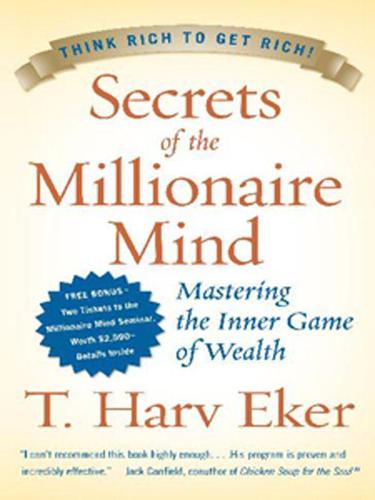
Secrets of the Millionaire Mind
by
T. Harv Eker
Published 15 Feb 2005
By the way, I use the analogy of a bus because once you are successful, your goal might be to bring others along on the ride with you. Poor and most middle-class people play the money game on one wheel only. They believe that the only way to get rich is to earn a lot of money. They believe that only because they’ve never been there. They don’t understand Parkinson’s Law, which states, “Expenses will always rise in direct proportion to income.” Here’s what’s normal in our society. You have a car, you make more money, and you get a better car. You have a house, you make more money, and you get a bigger house. You have clothes, you make more money, and you get nicer clothes.
…
Necessities Account need negative energy negativity negotiations network marketing net worth determining four factors of tracking of vs. working income net worth factors net worth objective Nita, Sean nonempowering thoughts, see disempowering thoughts not-doing habits nurturing obstacles One Minute Millionaire, The (Hansen and Allen) opportunities opportunity zone optimism outer laws of money outer world overspending parental influences Parkinson’s Law partners passive income through “business working for you,” through “money working for you,” vs. working income passive-income streams peace Peak Potentials Training people pleasers percentage personal characteristics of the wealthy see also individual characteristics personal growth continuing nonsupportive influences on in problem solving in retaining wealth personal histories personal service businesses personal success coaches perspective of “either/or” vs.
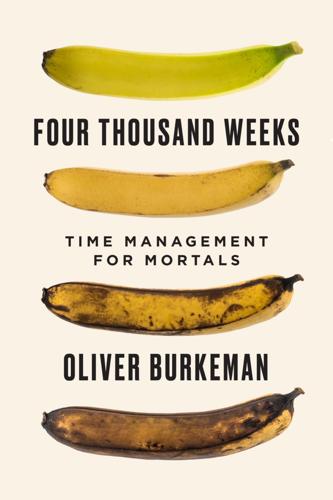
Four Thousand Weeks: Time Management for Mortals
by
Oliver Burkeman
Published 9 Aug 2021
The same goes for chores: in her book More Work for Mother, the historian Ruth Schwartz Cowan shows that when housewives first got access to “labor-saving” devices like washing machines and vacuum cleaners, no time was saved at all, because society’s standards of cleanliness simply rose to offset the benefits; now that you could return each of your husband’s shirts to a spotless condition after a single wearing, it began to feel like you should, to show how much you loved him. “Work expands so as to fill the time available for its completion,” the English humorist and historian C. Northcote Parkinson wrote in 1955, coining what became known as Parkinson’s law. But it’s not merely a joke, and it doesn’t apply only to work. It applies to everything that needs doing. In fact, it’s the definition of “what needs doing” that expands to fill the time available. This whole painful irony is especially striking in the case of email, that ingenious twentieth-century invention whereby any random person on the planet can pester you, at any time they like, and at almost no cost to themselves, by means of a digital window that sits inches from your nose, or in your pocket, throughout your working day, and often on weekends, too.
…
in her book More Work for Mother: Ruth Schwartz Cowan, “The Invention of Housework: The Early Stages of Industrialization,” in More Work for Mother: The Ironies of Household Technology from the Open Hearth to the Microwave (London: Free Association, 1989), 40–68. “Work expands so as to fill the time available”: C. Northcote Parkinson, “Parkinson’s Law,” The Economist, November 19, 1955, available at www.economist.com/news/1955/11/19/parkinsons-law. As the German sociologist Hartmut Rosa explains: Hartmut Rosa, Social Acceleration: A New Theory of Modernity, trans. Jonathan Trejo-Mathys (New York: Columbia University Press, 2015). “The more we can accelerate our ability to go to different places”: Jonathan Trejo-Mathys, “Translator’s Introduction,” in Rosa, Social Acceleration, xxi.
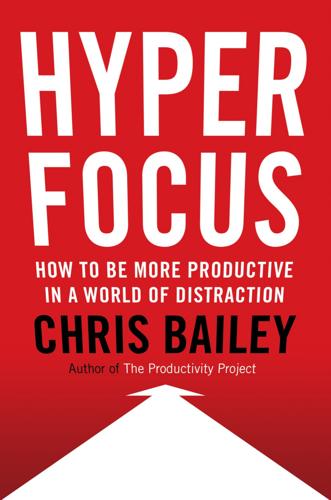
Hyperfocus: How to Be More Productive in a World of Distraction
by
Chris Bailey
Published 31 Jul 2018
The tactics in Hyperfocus will allow you to accomplish more in less time, but you may then find you don’t have enough work remaining to fill that extra time. This can manifest itself in some odd ways. Our work tends to expand to fit the available completion time—in productivity circles, this phenomenon is known as Parkinson’s law. But by disabling distractions in advance, you may find the same thing I did: your work no longer expands to fit the time you have available for its completion, and you discover how much work you truly have on your plate. Some executives I coach find they’re able to accomplish a full day’s work in just a few hours when they focus on only their most consequential tasks.
…
D., 60 memories, 18, 44, 57, 139 memorization, 24–25 memory, 152 attentional space and, 31, 43 “chunking” technique and, 25, 35–36 devices and, 43 forgetting why we walked into a room, 18, 38 long-term, 27 reading and, 29 short-term, 24–26 sleep and, 179 working, 27, 117–19, 122 Mendeleyev, Dmitry, 167 meta-awareness, 30 Microsoft, 73, 116 mind, open loops in, 107–8, 112, 144–45, 173 mindfulness, 30, 120–23, 203 “Mindless” folder, 91 mindless tasks, 11, 34 mind wandering, 11, 18, 37–38, 55, 111–13, 201–2 age and, 75n alcohol and, 208 conscious vs. unconscious, 31 hourly awareness chime and, 63–65 hyperfocus and, 58, 69 meditation and, 113n, 119 negative, 137 noticing, 153 past, present, and future in, 137–42, 167, 203, 212 power of, 129–30, 133 reading and, 17–18 unintentional, 142 see also scatterfocus Miranda, Lin-Manuel, 196n money, as motivation, 164n mood, 202–3 happiness, 201–5 motivations, intrinsic and extrinsic, 164 Mozart, Wolfgang Amadeus, 196 multitasking, 4, 5, 32, 35–36 attention shifts vs., 43 brain and, 43–44 costs of, 43–47 with habits, 32–33 stress and, 73–74 women vs. men in, 75n music, 104–7, 203n nature, 163 Nature, 152 necessary work, 20–22, 34, 59 negative self-talk, 30 Newport, Cal, 82 Newton, Isaac, 176 Nicklaus, Jack, 167 nighttime ritual, 168 noise-cancelling headphones, 83, 106 novelty bias, 41, 42, 136–38 numbers, 26 office, 104 cleanliness of, 101n, 103–4 getting out of, 84–85 open-plan, 210–12 temperature of, 104–5 whiteboard in, 61, 103 open loops, 107–8, 112, 144–45, 173 Parkinson’s law, 114 Partridge, Dale, 85–86 past, in mind wandering, 137–40, 167, 203 pens and highlighters, 10–11 People Over Profit (Partridge), 85 personal concerns, 112 worries, 19, 108, 112 personal life, hyperfocus and, 123–25 phone, 31, 41, 42, 43, 45, 55, 88, 100–102, 136 apps on, 91 being deliberate about use of, 89–92 breaks and, 76, 90, 149 disconnecting from, 2–3, 7–8 do not disturb mode on, 83, 89, 90–91 “Mindless” folder on, 91 mindless loop and, 18–19 notifications on, 45, 88–89, 94–95 paying attention to when you reach for, 8 second, for distractions, 91 socializing and, 100n, 149 swapping with friend, 90 phone conversations, overhearing, 106 plants, 103 pleasure, 136–37, 148 dopamine and, 41–42, 186–87, 202 Poldrack, Russell, 44 positive thinking, 201 present, in mind wandering, 137–40, 167 problem solving, 213 scatterfocus and, 143, 145–47, 178–79, 198 sleep and, 179 writing out the problem in, 178 procrastination, 4, 18, 21, 71, 85, 99, 116 productive tasks, 20, 21, 34, 37 productivity, 7, 18, 31, 44, 59, 169, 171 constraints and, 70 defining, 42 music and, 105 novelty and, 41 sleep and, 166–68 switching attention and, 47 temperature and, 104–5 and working around your energy levels, 205–7 work-related interruptions and, 75 prospective bias, 140–41, 148 purposeful work, 20–22, 34, 59, 109–10 radio, 40 Ratatouille (film), 207 reading, 17–18, 34, 183–84, 188 active vs. passive involvement in, 10–11 attentional space and, 28–29 focus in, 7–11 mind wandering and, 17–18 sentence structure and, 29 short-form memory in, 29 texting while, 110 recharging, 125, 127, 142, 159–70, 212 frequency and length of breaks, 163–66 nature and, 163 need for, signs of, 159–61 rest, 159, 169–70 scatterfocus and, 159, 161 taking more refreshing breaks, 161–63 see also sleep relationships, 125 rest, 159, 169–70 rote tasks, 116, 206n Rule of 3, 60 scatterfocus, 129–30, 133–58, 202, 212, 215 aversion to, 135–38 brain and, 151, 167, 172, 198, 199, 206 capture mode in, 143, 144–45, 198 and collecting dots, 182–99 and connecting dots, 171–81 creativity and, 133, 134, 171–73, 199 cues and, 177 energy and, 206 entering, 134 environment and, 176–77 frequency of, 197, 212 as fun, 148 habitual, 143, 147–50, 157, 174–76, 178, 197–99, 212 hyperfocus and, 151–53, 200 information consumption and, 181 insight triggers and, 173–76 as intentional, 142–43 opportunities for, 198–99 problem solving and, 143, 145–47, 178–79, 198 recharging and, 159, 161 scheduling time to experiment with, 150–51 sleep and, 167, 179 styles of, 142–51 and writing out problems, 178 schedules and calendars, 60–61, 107–8 Schooler, Jonathan, 138, 142–43, 153 self-control and impulsiveness, 77–78, 85 self-talk, 30 sentence structure, 29 serendipity, 194 shower, taking, 18, 55, 133 mindfulness and, 120–22 sleep, 18, 159, 166–68, 169 attentional space and, 160 brain and, 167 memory and, 179 nighttime ritual for, 168 ninety-minute rule cycles in, 164–65 productivity and, 166–68 REM stage of, 179 scatterfocus and, 167, 179 Smallwood, Jonathan, 138, 142–43 smartphone, see phone social media, 59, 88, 116 Facebook, 74, 76, 77n, 141n Twitter, 15, 76, 77 spotlight effect, 54n Star Wars: Episode I: The Phantom Menace (film), 23 stimulation, 156–57 stress, 73–74, 111–12 email and, 96 studying, 44 see also reading tasks: attentional space and, 31–38 attractive, 20, 21 brain’s processing of, 33 complex, 34–35, 37–38, 112 complex, hyperfocus and, 54, 55, 70–71, 112 complex, increasing, 113–16 consequences and, 61–62 distracting, 20–22 externalizing, 107–8 four types of, 19–22 grid for, 20–22, 59–60 leaving unfinished intentionally, 180–81 maintenance, 32 mindless, 11, 34 multitasking, see multitasking necessary, 20–22, 34, 59 productive, 20, 21, 34, 37 resistance to, 77 rote, 116, 206n Rule of 3 and, 60–61 purposeful, 20–22, 34, 59, 109–10 unattractive, 20, 21, 57, 71 unnecessary, 20–22 tea and coffee, 10, 83, 85, 208–10 television, 40, 41, 42, 43, 57, 100, 101, 168, 190–91 temperature, 104–5 ten-thousand-hour rule, 196–97 This Is Your Brain on Music (Levitin), 196 threats, 136–37 time: hyperfocus and, 57, 68–69, 72, 127 not having, 127 work expanding to fill, 114–15 timer, 69–70 to-do lists, 61, 95, 107–8 Tolkien, J.
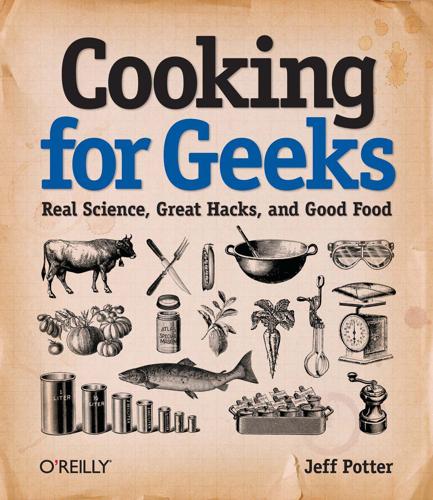
Cooking for Geeks
by
Jeff Potter
Published 2 Aug 2010
(Dull knives count. Keep those knives sharp!) Should something break while you’re cooking and leave bits of glass or ceramic in your food, toss the whole dish out and order pizza. (Mmm, pizza: cheaper than a visit to the emergency room.) Note Parkinson’s Law: Work expands so as to fill the time available for its completion. Potter’s Corollary to Parkinson’s Law: Kitchen stuff expands so as to fill every last shelf and drawer. Kitchen stuff expands to fill all available space, and then some. Any time you introduce a new chop-o-whiza-matic to your kitchen, try to remove something that takes up a similar amount of space.
…
in recipes, Picking a Recipe organic foods, Seasonal Method Oskay, Windell, Making ice cream osmosis salt and, Salt sugar and, Sugar Ossau-Iraty (cheese), Seasonal Method oven overclocking, High-heat ovens and pizza oven spring, Yeast in breads Oven-Cooked Barbeque Ribs, Liquid Smoke: Distilled Smoke Vapor ovens calibrating using sugar, Approaching the Kitchen high-heat, Sous Vide Cooking, Blowtorches for crème brûlée improving recovery time, Approaching the Kitchen regulating heat, Approaching the Kitchen oxygen bacterial growth and, Foodborne Illness and Staying Safe FAT TOM acronym, Foodborne Illness and Staying Safe liquid nitrogen and, Dangers of liquid nitrogen yeast and, Yeast in beverages oxymyoglobin, How to Prevent Foodborne Illness Caused by Bacteria oyster knife, Knives O’Reilly, Tim, Baking Powder P palate cleansers, Taste (Gustatory Sense) pan searing (see ) Slow-Cooked Short Ribs, 154°F / 68°C: Collagen (Type I) Denatures pancake recipes Buttermilk Pancakes, Baking Soda Pancakes, Picking a Recipe pans, heating, Reading Between the Lines papain (enzyme), 154°F / 68°C: Collagen (Type I) Denatures par-baking pizza, Pizza par-cooking, 310°F / 154°C: Maillard Reactions Become Noticeable parasites foodborne illnesses and, How to Prevent Foodborne Illness Caused by Parasites freezing, How to Prevent Foodborne Illness Caused by Parasites, Sous Vide Cooking pH levels and, Acids and Bases trichinosis and, Wet brining paring knife, Knives Parkinson’s Law, Kitchen Pruning parma torte, Regional/Traditional Method pasteurization defined, Foodborne Illness and Staying Safe eggs and, The 30-Minute Scrambled Egg food safety and, How to Prevent Foodborne Illness Caused by Bacteria sous vide cooking and, Foodborne Illness and Sous Vide Cooking, Chicken and other poultry surface contamination and, How to Prevent Foodborne Illness Caused by Bacteria pastry chefs, 356°F / 180°C: Sugar Begins to Caramelize Visibly, Whipped Cream, Playing with Chemicals A Pattern Language (Alexander), Uniform Storage Containers peanut allergies, Ingredients to avoid Pear Sorbet, Smell (Olfactory Sense) PEBKAC-type errors, Know your type pectin improving mouth-feel, Making Gels: Starches, Carrageenan, Agar, and Sodium Alginate making, 158°F / 70°C: Vegetable Starches Break Down making jam, Baking Powder starchy vegetables and, 158°F / 70°C: Vegetable Starches Break Down pepper grinders, Unitaskers pepperminty odor, Analytical Method perceptions, reasons for cooking, Functional Fixedness Perfumer’s Compendium (Allured), Analytical Method perishable foods, storage tips, Kitchen Equipment PFOA, Pots and pans pH scale about, Baking Soda, Acids and Bases food additives and, E Numbers: The Dewey Decimal System of Food Additives sodium citrate and, Making gels: Sodium alginate pickling, flash, Chocolate Pie Dough, Gluten pinch (as measurement), Bitter piperine, Combinations of Tastes and Smells pizza, Pizza high-heat ovens and, Blowtorches for crème brûlée Pizza Dough—No-Knead Method, Pizza Pizza Dough—Yeast-Free Method, Baking Powder pizza stones, Approaching the Kitchen, Yeast in breads, Pizza plasmolysis, Salt, Sugar plastic storage bags, Water heaters Playing with Fire and Water blog, Commercial Hardware and Techniques 1-p-methene-8-thiol, Smell (Olfactory Sense) Poached Pears in Red Wine, 158°F / 70°C: Vegetable Starches Break Down poaching, Sous Vide Cooking (see also ) Oven-Poached Eggs, The 30-Minute Scrambled Egg Poached Pears in Red Wine, 158°F / 70°C: Vegetable Starches Break Down Salmon Poached in Olive Oil, 104°F / 40°C and 122°F / 50°C: Proteins in Fish and Meat Begin to Denature polar bonds, Alcohol, Making Foams: Lecithin Pollan, Michael, A Few Words on Nutrition, Seasonal Method polymer fume fever, Pots and pans PolyScience, Making ice cream popcorn lung, Smell (Olfactory Sense) Popovers, Whipped Cream poppy seed bagels, Cooking for Others Pork Chops Stuffed with Cheddar Cheese and Poblano Peppers, Wet brining pork, trichinosis and, Wet brining portion control, A Few Words on Nutrition post-mortem proteolysis, 104°F / 40°C and 122°F / 50°C: Proteins in Fish and Meat Begin to Denature potassium bicarbonate, Baking Soda potatoes Roasted Potatoes with Garlic and Rosemary, Seasonal Method Rosemary Mashed Potatoes, 158°F / 70°C: Vegetable Starches Break Down Skillet Fried Potatoes, 310°F / 154°C: Maillard Reactions Become Noticeable pots and pans, Cutting boards acidity in foods and, Reading Between the Lines, Pots and pans buttering, Adapt and Experiment Method cladded metals, Pots and pans hanging up, Counter Layout hot spots, Pots and pans organizing, Kitchen Organization splatter guards, Bar towels thermal conductivity of, Pots and pans, Methods of Heat Transfer types of, Cutting boards, Kitchen Pruning Potter’s Corollary to Parkinson’s Law, Kitchen Pruning Poulette Sauce, Adapt and Experiment Method poultry (see ) Powdered Brown Butter, "Melts" in your mouth: Maltodextrin Powell, Doug, How to Prevent Foodborne Illness Caused by Parasites Pralus, George, Sous Vide Cooking prepping ingredients, Calibrating Your Instruments, Thermometers and timers preserving foods Lime Marmalade, Sugar Preserved Lemons, Wet brining with salt, Traditional Cooking Chemicals, Dry brining, Wet brining with sugar, Sugar pressure cooking, Convection, 310°F / 154°C: Maillard Reactions Become Noticeable, Stock, broth, and consommé probe thermometer, Avoid PEBKAC-type errors: RTFR!
…
in recipes, Picking a Recipe organic foods, Seasonal Method Oskay, Windell, Making ice cream osmosis salt and, Salt sugar and, Sugar Ossau-Iraty (cheese), Seasonal Method oven overclocking, High-heat ovens and pizza oven spring, Yeast in breads Oven-Cooked Barbeque Ribs, Liquid Smoke: Distilled Smoke Vapor ovens calibrating using sugar, Approaching the Kitchen high-heat, Sous Vide Cooking, Blowtorches for crème brûlée improving recovery time, Approaching the Kitchen regulating heat, Approaching the Kitchen oxygen bacterial growth and, Foodborne Illness and Staying Safe FAT TOM acronym, Foodborne Illness and Staying Safe liquid nitrogen and, Dangers of liquid nitrogen yeast and, Yeast in beverages oxymyoglobin, How to Prevent Foodborne Illness Caused by Bacteria oyster knife, Knives O’Reilly, Tim, Baking Powder P palate cleansers, Taste (Gustatory Sense) pan searing (see ) Slow-Cooked Short Ribs, 154°F / 68°C: Collagen (Type I) Denatures pancake recipes Buttermilk Pancakes, Baking Soda Pancakes, Picking a Recipe pans, heating, Reading Between the Lines papain (enzyme), 154°F / 68°C: Collagen (Type I) Denatures par-baking pizza, Pizza par-cooking, 310°F / 154°C: Maillard Reactions Become Noticeable parasites foodborne illnesses and, How to Prevent Foodborne Illness Caused by Parasites freezing, How to Prevent Foodborne Illness Caused by Parasites, Sous Vide Cooking pH levels and, Acids and Bases trichinosis and, Wet brining paring knife, Knives Parkinson’s Law, Kitchen Pruning parma torte, Regional/Traditional Method pasteurization defined, Foodborne Illness and Staying Safe eggs and, The 30-Minute Scrambled Egg food safety and, How to Prevent Foodborne Illness Caused by Bacteria sous vide cooking and, Foodborne Illness and Sous Vide Cooking, Chicken and other poultry surface contamination and, How to Prevent Foodborne Illness Caused by Bacteria pastry chefs, 356°F / 180°C: Sugar Begins to Caramelize Visibly, Whipped Cream, Playing with Chemicals A Pattern Language (Alexander), Uniform Storage Containers peanut allergies, Ingredients to avoid Pear Sorbet, Smell (Olfactory Sense) PEBKAC-type errors, Know your type pectin improving mouth-feel, Making Gels: Starches, Carrageenan, Agar, and Sodium Alginate making, 158°F / 70°C: Vegetable Starches Break Down making jam, Baking Powder starchy vegetables and, 158°F / 70°C: Vegetable Starches Break Down pepper grinders, Unitaskers pepperminty odor, Analytical Method perceptions, reasons for cooking, Functional Fixedness Perfumer’s Compendium (Allured), Analytical Method perishable foods, storage tips, Kitchen Equipment PFOA, Pots and pans pH scale about, Baking Soda, Acids and Bases food additives and, E Numbers: The Dewey Decimal System of Food Additives sodium citrate and, Making gels: Sodium alginate pickling, flash, Chocolate Pie Dough, Gluten pinch (as measurement), Bitter piperine, Combinations of Tastes and Smells pizza, Pizza high-heat ovens and, Blowtorches for crème brûlée Pizza Dough—No-Knead Method, Pizza Pizza Dough—Yeast-Free Method, Baking Powder pizza stones, Approaching the Kitchen, Yeast in breads, Pizza plasmolysis, Salt, Sugar plastic storage bags, Water heaters Playing with Fire and Water blog, Commercial Hardware and Techniques 1-p-methene-8-thiol, Smell (Olfactory Sense) Poached Pears in Red Wine, 158°F / 70°C: Vegetable Starches Break Down poaching, Sous Vide Cooking (see also ) Oven-Poached Eggs, The 30-Minute Scrambled Egg Poached Pears in Red Wine, 158°F / 70°C: Vegetable Starches Break Down Salmon Poached in Olive Oil, 104°F / 40°C and 122°F / 50°C: Proteins in Fish and Meat Begin to Denature polar bonds, Alcohol, Making Foams: Lecithin Pollan, Michael, A Few Words on Nutrition, Seasonal Method polymer fume fever, Pots and pans PolyScience, Making ice cream popcorn lung, Smell (Olfactory Sense) Popovers, Whipped Cream poppy seed bagels, Cooking for Others Pork Chops Stuffed with Cheddar Cheese and Poblano Peppers, Wet brining pork, trichinosis and, Wet brining portion control, A Few Words on Nutrition post-mortem proteolysis, 104°F / 40°C and 122°F / 50°C: Proteins in Fish and Meat Begin to Denature potassium bicarbonate, Baking Soda potatoes Roasted Potatoes with Garlic and Rosemary, Seasonal Method Rosemary Mashed Potatoes, 158°F / 70°C: Vegetable Starches Break Down Skillet Fried Potatoes, 310°F / 154°C: Maillard Reactions Become Noticeable pots and pans, Cutting boards acidity in foods and, Reading Between the Lines, Pots and pans buttering, Adapt and Experiment Method cladded metals, Pots and pans hanging up, Counter Layout hot spots, Pots and pans organizing, Kitchen Organization splatter guards, Bar towels thermal conductivity of, Pots and pans, Methods of Heat Transfer types of, Cutting boards, Kitchen Pruning Potter’s Corollary to Parkinson’s Law, Kitchen Pruning Poulette Sauce, Adapt and Experiment Method poultry (see ) Powdered Brown Butter, "Melts" in your mouth: Maltodextrin Powell, Doug, How to Prevent Foodborne Illness Caused by Parasites Pralus, George, Sous Vide Cooking prepping ingredients, Calibrating Your Instruments, Thermometers and timers preserving foods Lime Marmalade, Sugar Preserved Lemons, Wet brining with salt, Traditional Cooking Chemicals, Dry brining, Wet brining with sugar, Sugar pressure cooking, Convection, 310°F / 154°C: Maillard Reactions Become Noticeable, Stock, broth, and consommé probe thermometer, Avoid PEBKAC-type errors: RTFR!
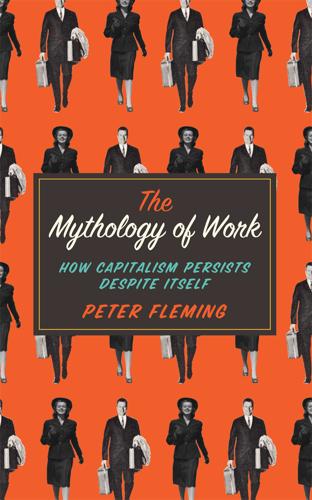
Mythology of Work: How Capitalism Persists Despite Itself
by
Peter Fleming
Published 14 Jun 2015
But workplace informality has a dark side; namely, the potential for authoritarianism to take on a rather sadistic and perverse quality. Informality and power do not go well together. Under such circumstances we are not only paying for the elite’s freedoms, but being callously toyed with to boot. Hence Jez’s rancour. And herein lies the problem with anti-work arguments that evoke Parkinson’s Law. The idea behind the law is simple. If we are given eight hours to perform a task, it usually takes eight hours to do so successfully. If we are only given three hours to do the same task, it typically takes three hours to do so successfully. Therefore, we could spend much less time on the job whilst maintaining the same level of productivity achieved by the 40-hour work week.
…
capitalism ref1, ref2, ref3, ref4 General Motors plant (Michigan) ref1 Goffee, R. ref1 Goldman Sachs ref1 The Good Soldier Svejk (Hasek) ref1 Gordon, D. ref1 Gorz, A. ref1, ref2 Graeber, D. ref1 Groundhog Day (Ramis) ref1 Guattari, F. ref1, ref2, ref3 on criticism/criticality ref1 and de-subjectification ref1 language ref1, ref2 Gujarat NRE ref1 Gulf of Mexico oil spill (2010) ref1 Hamper, B. ref1 Hanlon, G. ref1 Hardt, M. ref1 Hart, A. ref1 Harvard Business Review (HBR) ref1 Harvey, D. ref1, ref2 Hayek, F. ref1, ref2, ref3 health and safety ref1, ref2 ‘Help to Buy’ support scheme ref1 Hirschhorn, N. ref1 Hodgkinson, T. ref1 holiday policy ref1 Houellebecq, Michel ref1, ref2, ref3 human capital ref1, ref2, ref3, ref4, ref5, ref6, ref7 human relations movement ref1 Human Resource Management (HRM) ref1, ref2, ref3, ref4, ref5, ref6 humour ref1 ‘I, Job’ function ref1, ref2, ref3, ref4, ref5, ref6 and biopower ref1, ref2 and death drive ref1, ref2 as escape into work ref1 and illness ref1, ref2, ref3 resisting ref1, ref2, ref3, ref4, ref5, ref6 see also escape; totality refusal see also work, as all-encompassing; working hours illegal immigrants, deportations ref1 illness ref1, ref2 collective ref1, ref2 see also Social Patients’ Collective as desirable experience ref1, ref2, ref3, ref4 of managers ref1, ref2 and productive power ref1, ref2 as weapon against capitalism ref1 ‘immersion room’ exercise ref1, ref2, ref3, ref4 imperceptibility ref1 see also invisibility incentivization ref1 indexation process ref1, ref2, ref3, ref4, ref5 informality and authoritarianism ref1, ref2 see also deformalization insecurity ref1 Institute of Leadership and Management (ILM) ref1, ref2, ref3 invisibility ref1, ref2 ‘Invisible Committee’ ref1, ref2 Italian autonomist thought ref1, ref2 Jameson, F. ref1 Jones, G. ref1 Junjie, Li ref1 Kamp, A. ref1 Kein Mensch ist illegal ref1 Kellaway, L. ref1 Key Performance Indicators (KPIs) ref1 Keynes, J.M. ref1, ref2 Khrushchev, Nikita ref1, ref2 Kim, Jonathan ref1 King, Stephen ref1 ‘Kitchen Debate’ ref1 Kramer, M. ref1, ref2 labour unions ref1 dissolution of ref1, ref2 language, evolution of ref1 Larkin, P. ref1 Latour, B. ref1, ref2 Laval, C. ref1, ref2 Lazzarato, M. ref1, ref2 leaders backgrounds ref1 remuneration and bonuses ref1, ref2, ref3, ref4, ref5 see also managers Lefebvre, H. ref1 Leidner, R. ref1 Lewin, D. ref1 liberation management ref1, ref2, ref3, ref4, ref5 life itself, enlisting ref1, ref2, ref3, ref4, ref5 lines of flight ref1, ref2 Lordon, F. ref1, ref2, ref3 Lucas, R. ref1, ref2 Lukács, G. ref1 Lynch, R. ref1 McChesney, R. ref1 McGregor, D. ref1 management ref1, ref2 and class function ref1, ref2 as co-ordination ref1 and inducement of willing obedience ref1, ref2 information deficit ref1 and power ref1, ref2 self-justification rituals ref1 as transferable skill ref1, ref2 managerialism ref1, ref2, ref3, ref4, ref5, ref6, ref7 and abandonment ideology ref1, ref2, ref3, ref4, ref5 and boundary management ref1 and conflict-seeking behaviour ref1 division between managers and managed ref1, ref2 general principles of ref1 and leadership ref1 profligate management function ref1 refusing ref1 and securitization ref1 as self-referential abstraction ref1 managers as abandonment enablers ref1, ref2 and deformalization ref1 and engagement of workers ref1, ref2 lack of practical experience ref1 overwork ref1, ref2 see also leaders Marcuse, H. ref1 Market Basket supermarket chain ref1 Marx, K. ref1, ref2, ref3, ref4, ref5, ref6 Maslow, A. ref1 Matten, D. ref1 meat consumption ref1 Meek, J. ref1 Meyerson, D. ref1 Michelli, J. ref1 Miller, W.I. ref1 Mitchell, David ref1 mobile technology ref1, ref2, ref3, ref4, ref5, ref6, ref7 Modafinil ref1, ref2 Monaghan, A. ref1 money ref1, ref2 see also accumulation Mooney, G. ref1 Moore, A.E. ref1 Moore, Michael ref1, ref2 music industry ref1 Naidoo, Kumi ref1 NASA ref1 Natali, Vincenzo ref1 Negri, A. ref1, ref2 neoliberal capitalism ref1, ref2, ref3, ref4, ref5, ref6, ref7 and bureaucracy ref1 and ideal worker ref1, ref2 and non-work time ref1, ref2 and paranoia ref1, ref2 resisting ref1, ref2 see also post-labour strategy and threat of abandonment ref1, ref2 and truth telling ref1, ref2, ref3 neoliberalism ref1, ref2, ref3, ref4, ref5, ref6 and class relations ref1, ref2, ref3 and disciplinary power ref1 and human-capital theory ref1 and impossibility ref1, ref2, ref3, ref4, ref5, ref6 and micro-fascism ref1 and reign of technocrats ref1 role of state ref1 and truth telling ref1, ref2 and worker engagement ref1, ref2, ref3 Nestlé ref1 New Public Management ref1, ref2 New Zealand, and capitalist deregulation ref1 New Zealand Oil and Gas (NZOG) ref1 Newman, Maurice ref1 Nietzsche, Friedrich ref1, ref2 Nixon, Richard ref1, ref2 Nyhan, B. ref1 obsession ref1, ref2, ref3, ref4, ref5, ref6, ref7, ref8 Onionhead program ref1 overcoding ref1, ref2, ref3, ref4, ref5, ref6, ref7 The Pain Journal (Flanagan) ref1, ref2, ref3 paranoia ref1, ref2, ref3, ref4 overwork/paranoia complex ref1, ref2 Paris Commune ref1, ref2 Parkinson’s Law ref1 Parnet, C. ref1 Parsons, T. ref1 Peep Show (TV comedy) ref1 pensions ref1, ref2 personnel management ref1 see also Human Resource Management Peters, T. ref1 Philip Morris ref1 Pike River Coal mine (New Zealand) ref1 Pollack, Sydney ref1 Pook, L. ref1 Porter, M. ref1, ref2 post-labour strategy, recommendations ref1 postmodernism ref1, ref2, ref3 power ref1, ref2, ref3, ref4, ref5 and truth telling ref1 Prasad, M. ref1 Price, S. ref1 private companies, transferring to public hands ref1 privatization ref1, ref2, ref3, ref4, ref5, ref6, ref7 profit maximization ref1, ref2, ref3, ref4, ref5 quantitative easing ref1 Rand, Ayn ref1 rationalization ref1, ref2, ref3 Reifler, J. ref1 reserve army of the unemployed ref1 Ressler, C. ref1 results-only work environment (ROWE) ref1, ref2, ref3 Rimbaud, A. ref1 Rio+20 Earth Summit (2012) ref1 ‘riot grrrl’ bands ref1 rituals of truth and reconciliation ref1 Roberts, J. ref1 Roger Award ref1 Roger and Me (Moore) ref1 Rosenblatt, R. ref1 Ross, A. ref1, ref2 Ross, K. ref1 Rudd, Kevin ref1 ruling class fear of work-free world ref1, ref2 and paranoia ref1, ref2 Sade, Marquis de ref1 Sallaz, J. ref1 Saurashtra Fuels ref1 Scarry, E. ref1 Securicor (G4S) ref1 Segarra, Carmen ref1 self-abnegation ref1 self-employment ref1 self-management ref1, ref2, ref3, ref4, ref5 self-preservation ref1, ref2, ref3, ref4 self-sufficiency ref1, ref2, ref3 shareholder capitalism ref1, ref2, ref3, ref4 shift work ref1, ref2 see also working hours Shragai, N. ref1 sleep and circadian rhythms ref1 as form of resistance ref1 working in ref1, ref2, ref3 smart drugs ref1, ref2 Smith, Roger ref1 smoking and addiction ref1 dangers of ref1, ref2 scientific research ref1 sociability ref1, ref2 ‘the social’ ref1, ref2 social factory ref1, ref2, ref3, ref4, ref5, ref6, ref7 and structure of work ref1 social media ref1 Social Mobility and Child Poverty Commission ref1 Social Patients’ Collective (SPK) ref1, ref2, ref3 social surplus (commons) ref1, ref2, ref3 socialism ref1, ref2, ref3, ref4 Sontag, S. ref1 Spicer, A. ref1 stakeholder management ref1, ref2 Starbucks ref1 state, theory of ref1 subcontracting ref1, ref2, ref3 subsidization ref1, ref2, ref3, ref4, ref5, ref6, ref7 suicide as act of refusal ref1 Freud’s definition ref1 work-related ref1, ref2, ref3, ref4, ref5 surplus labour ref1, ref2 surplus living wage ref1 ‘tagged’ employees ref1 ‘tagged’ prisoner ref1 Tally, Richard ref1 taxation ref1, ref2, ref3 Taylor, F.W. ref1 Taylor, S. ref1 Taylorism ref1 technological progress, and emancipation from labour ref1 Thatcher, Margaret ref1 Thatcherism ref1 They Shoot Horses Don’t They?

The Charisma Myth: How Anyone Can Master the Art and Science of Personal Magnetism
by
Olivia Fox Cabane
Published 1 Mar 2012
Of course, the most useful alternate reality is not necessarily the most pleasant. When my publishers gave me a year to write the book you’re now holding, I wanted to progress as efficiently as possible, avoiding the procrastination pitfalls that ensnare so many first-time authors. One author friend reminded me of a maxim called Parkinson’s Law: “Work expands so as to fill the time available for its completion.” He challenged me: “Rather than letting the writing process fill the entire year, try to write the entire book in one month. At the end of a month, what you have will certainly not be a finished book, but it’ll be more than you would have without this self-imposed deadline.”
…
Index academia, 3 acceptance, 103, 231 adrenaline, 38, 170, 196–97 alpha males, 86, 219 American Express, 118–19 analogies, 189, 233 anger, 50, 52, 170 annoyances, 77 anxiety, 32–37, 38, 40, 42, 50, 56, 86, 90, 202 apologies, 165, 171, 180–83, 186 appearance, 102, 232 authority charisma and, 106 at presentations, 191 Apple, 101, 189 appreciation, 75–79, 168–70, 209, 233 arrogance, 106, 162 assertiveness, 92 athletic conditioning, 12, 38 attention, 138–39 attractiveness, 10 authority, 142, 191, 210 authority charisma, 98, 104–7, 109–10, 112, 119, 167, 231 awareness, 30–31, 161 bad news, 165, 172–75, 186, 233 Barnard, Hayes, 109, 215–16 Batman (film), 40 behavior, 232 visionary charisma and, 101 warmth and, 18 behavioral science, 11, 85, 94, 115, 150 Benjamin Franklin Effect, 167–68, 208 Berman, Adam, 34 blinking, 21, 153 boardroom presence, 5 body language, 4, 17, 18, 20–24, 26, 27, 39, 41, 42, 53, 58, 109, 111, 128, 143–64, 229–30, 232–34 for actors, 68 anxiety and, 32, 202 apologies and, 181 authority charisma and, 106 bad news and, 174, 186 compassion and, 176 criticism and, 179 empathy and, 171 enthusiasm, 139 exercise of, 91–92 focus charisma and, 99, 100 goodwill and, 80, 82 gratitude and, 76 kindness charisma and, 103 mental states created by, 91–92, 103, 240 mimicking, 146–50, 163, 164 on phone, 184 physical discomforts and, 29–31 stress hormones and, 170 visionary charisma and, 101 visualization and, 68, 69, 73, 97 Bosl, William, 35–36 bounce back technique, 124 Brach, Tara, 18 Bradoo, Privahini, 81 brain: as changeable, 68 imaginary v. real indistinguishable to, 24–25, 26, 44, 55 left frontal lobes, 88 Brando, Marlon, 68 breathing, 15, 16, 17, 30, 129, 141, 195–96, 198, 234, 235, 241–42 Brown, Brené, 45 brute force, 19 Buddha, 88 Bush, George W., 101, 110, 203, 216 business, 100 business success, handling uncertainty and, 34 California, University of, at Berkeley, 11 calls, 96–97 calm, 172 candles, 174 Capone, Al, 169 Carnegie, Dale, 135, 168 Ceci, Stephen, 139 CEOs, 6, 116–17, 218 Chariots of Fire, 71 charisma: as applied science, 6 authority, 98, 104–7, 109–10, 112, 119, 167, 231 as believed innate, 2, 4 benefits of, 2–3 choosing right style of, 98–114, 166 conscious practice of, 11, 12, 14, 15, 34–35, 46, 50–51, 56, 57, 62–63, 64–65, 69–70, 77–79, 81, 83, 87, 88–89, 91–92, 96, 108, 119, 121–22, 140, 141, 152, 155, 159–60, 199, 217, 235–43 creating mental states of, 67–97 in a crisis, 201–5, 234 as critical in business, 3 downsides of, 206–21 experimenting with, 111, 113, 114 fluctuations in level of, 4 focus, 98–101, 103, 107, 109, 110, 112, 166–67, 181, 214, 231 kindness, 98, 102–4, 107, 109, 110, 112, 133, 158, 171, 175, 214, 231 learning of, 2, 4, 22 myths of, 9–12, 229 obstacles to, 27–42, 43–66, 67, 230 as originating in mind, 21–23 putting work into, 6 studies of, 5, 9, 10, 51 styles of, 98–114, 231 visionary, 98, 101–2, 103, 107, 108, 109, 110, 112, 136, 167, 231 warming up for, 93–97, 103, 172 chin, 162, 182 chromatic effects, 191 Chrysler, 137 Churchill, Winston, 10, 50, 112, 201 Clinton, Bill, 2, 6, 80, 109, 134–35, 208–9, 216–17 clothing, 19, 30, 42, 47, 102, 106, 118–19, 127, 159, 230, 233–34 authority status and, 105 cognitive reappraisal, 52–54 cognitive science, 11 Columbia University, 91 comedians, 193 comfort, 152 comfort zones, 64–65, 114, 151, 224 comparison, 37 compassion, 79–82, 83–84, 97, 103, 150, 176, 231, 239 self-, 84–90, 103, 181, 239 compliments, 134–36 confidence, 32, 39–41, 43, 60, 67, 69, 70, 92, 97, 142, 161, 172 authority confidence and, 104–7 kindness charisma and, 102–4 self-, 84, 85–86, 94–95 conscious mirroring, 146–50 consultants, 100 continuous partial attention, 16 conversations, 7, 123–26, 127, 232 exiting, 125–26, 127, 179–80 hostile, 100 cortisol, 38 creativity, 107 critical thinking, 106 criticism, 165, 175–80, 186 self-, 38–39, 40, 42, 50, 86–87, 90 Dalai Lama, 5, 19, 87, 88, 98, 103, 104, 112 Darius, 147–49 Darwin, Charles, 74 Deckers Outdoors, 83 dedramatize, 46, 59, 66, 198, 202 defensiveness, 177 Deloitte, 83 delving into sensations, 61, 62–64, 100, 129 DeNiro, Robert, 68 depersonalization, 176–77, 233 depression, 86, 90 desperation, 75 destigmatizing, 43–46, 47, 51, 58, 59, 65, 66, 198, 202, 236 Deutsche Bank, 124–25 Diana, Princess of Wales, 112 difficult people, 7, 165–72 discomfort, 47, 60–61, 66 delving into, 61, 62–64 destigmatizing, 43–46, 47, 51, 58, 59, 65, 66, 198, 202, 236 mental, 31–41, 43, 44, 65 physical, 28–31, 42, 43, 44, 59, 65, 66 practice with, 62–63, 64–65 Disraeli, Benjamin, 9, 20, 124, 133 dissatisfaction, 37, 40, 42 distractions, 15–16 dramatic pauses, 196–97 Drucker, Peter, 220 Edison, Thomas, 74 Egypt, 120 Ekman, Paul, 111n e-mails, 73, 97, 183, 185, 186 Emerson, Ralph Waldo, 74 emotional contagion, 145–46, 164 emotions, 91, 144, 163, 211 empathy, 82, 145, 160, 170, 171, 176, 233 while delivering criticism, 175–76 facial expressions and, 174 energy, 92 engineers, 24 entertainment, 138, 142 enthusiasm, 139, 156, 185 envy, 207–11 equanimity, 201–2, 234 executive presence, 5 executives, 23 external skills, 23 extroverts, 108 eye contact, 111, 122, 153–56, 162, 164 “Eye of the Tiger” (song), 71 eyes, 28–29, 30, 31, 42 facial expressions, 14, 21–22, 38–39, 47, 91, 97, 111, 130–31 apologies and, 181 criticisms and, 179, 182 delayed, 184 empathy and, 174 Fauré, Gabriel, 196 fear, 40–41 feedback, 106, 107 Fehmi, Les, 154 Feuer, Michael, 184 fidgeting, 106, 149, 160, 161, 173 fight or flight, 5, 38, 41, 52, 117, 144, 159, 197 firelight, 174 fireside chats, 194 first impressions, 115–27, 149, 232 “firsts,” 177 Fisher, Helen, 153 “Flying” (song), 71 focus, 183–84, 191 focus charisma, 98–101, 103, 107, 109, 110, 112, 166–67, 181, 214, 231 Franklin, Benjamin, 167–68, 178 French Revolution, 201 frustration, 130 functional MRI scans, 80 funerals, imagining, 78–79, 83 Galbraith, John Kenneth, 115, 169 Gandhi, Mohandas, 112, 201 Gates, Bill, 19, 99, 112 Germer, Christopher, 87, 90 gestures, 139 Gilbert, Daniel, 16 Gilbert, Paul, 82 Gladstone, William, 9, 20 glucose, 29 goals, 107, 110, 113 Goldsmith, Marshall, 215, 220 Goleman, Daniel, 146 good feelings, 138, 142 goodwill, 79–82, 97, 103, 111, 114, 199, 231 criticism and, 182–83, 186 practice of, 81, 83 Google, 119, 135 gorilla exercise, 158, 159, 164, 193, 242 graffiti metaphor, 49, 50, 66 gratitude, 75–79, 97, 103, 231, 238 practice of, 77–79 gravitas, 92 Gross, James, 22n Gruenfeld, Deborah, 158, 159 Gulf War, 203 handshakes, 119–23, 127, 240 Hanson, Rick, 82 happiness, 53n, 81 Haque, Omar Sultan, 201 Harvard Business Review, 144, 146 Harvard Medical School, 55 Harvard University, 73, 91, 116–17 Hayes, Stephen, 49, 51 hedonic adaptation, 76 Hill, Napoleon, 74 Hitler, Adolf, 220 House, Robert, 3, 203 Howard, John Newton, 71 How to Win Friends and Influence People (Carnegie), 168 hugs, 73, 198 human resources, 116–17 hunter-gatherers, 117 Iacocca, Lee, 137 IBM, 99–100, 119 imaginary situations, 24–25, 26, 44, 55 compassion and, 83 funeral, 78–79, 83 immune system, 86 impact, 210 impatience, 63 impostor syndrome, 39–40, 41 income, 2 inferiority, 90 information, 138, 142 insecurity, 160 inspiring, 102 internal critic, 86 interrupting, 129, 130, 182 interviews, 38, 96–97, 113, 116–17, 119, 130, 159 intonation, 10, 106, 139–40, 141, 142, 194–95, 233, 241 introverts, 10, 98, 108 Iowa, University of, 119–20 iPhones, 189 iPod Nano, 136 irritants, 192 irritation, 155 Izuma, Keise, 168 JALIR sequence, 210–11 Joan of Arc, 101, 112 Jobs, Steve, 2, 101, 108, 112, 146, 189–90 increasing charisma of, 4–5 presentations rehearsed by, 192 Jones, Franklin, 175 Jones, Jim, 102 Jordan, Michael, 104, 216 Jungle Book, The (Kipling), 118 justification, 209 Keeler, Jack, 99–100 Kelleher, Herb, 146 Kennedy, John F., 129 Kerry, John, 107–8 Khurana, Rakesh, 215 kindness charisma, 98, 102–4, 107, 109, 110, 112, 133, 158, 171, 175, 214, 231 King, Martin Luther, Jr., 101, 112 Kipling, Rudyard, 118 Kosslyn, Stephen, 68 Krauss, Stephen, 70 Langer, Ellen, 25 language, 20, 136, 144, 186 Lao Tzu, 24 “lasts,” 177 leadership, 2, 3 compassion needed for, 83 Leahy, Robert, 32 lectures, 139–40 left frontal lobes, 88 life, enjoying, 17–18 limbic resonance, 146 Lincoln, Abraham, 74, 136 listening, 14, 17, 26, 100, 128–31, 142, 184, 231, 232, 241 Little Prince, The (Saint-Exupéry), 185 logic, 144, 163 lovable book, 90 love at first sight, 153 Lowndes, Leil, 185 Lurie, Bob, 40 Madonna, 98 Mao Zedong, 112, 220 marketing, 169 Martinez, Angel, 83 meditation, 12, 15, 16, 18, 45 meetings, 72–73, 96–97 memory cards, 189–90 mental discomfort, 31–41, 43, 44, 65 metaphors, 189, 190, 233 Method acting, 12, 68 Metta, 87–90, 239–40 Michelangelo, 27 microexpressions, 22, 182 mindfulness discipline, 15, 45 Mindful Path to Self-Compassion, The (Germer), 87 mindset shift, 15–16, 224 mind wandering, 16 mirror, 155 mirror neurons, 145 Miss Piggy, 92–93 MIT, 73 MIT Media Lab, 20, 126, 140 moms, 3 Monitor Group, 40 Monroe, Marilyn, 1, 4 Multiple Sclerosis Association, 203 Muppet Show, The, 92–93 music, 70–71, 95, 96, 174 Musk, Elon, 98–99 Mussolini, Benito, 104, 220 Napoleon I, Emperor of the French, 74, 201, 204 narcissism, 85 neediness, 75 Neff, Kristin, 86 negative associations, 131–34, 142 negativity, 37, 38–39, 40, 42, 46 neutralizing, 47–51, 58, 59, 65, 66, 202, 236 suppressing, 52 negativity bias, 48–49 negotiations, 100, 130 NeuroLeadership Institute, 38 neuronal connections, 68 neuroscience, 11 Newman, Paul, 68 New Scholars, 147–49 New York Times, 188 Ney, Marshal, 204 Nicklaus, Jack, 67 nocebo effect, 25–26 nodding, 10, 106, 149, 160, 161, 162, 164 numbers, 189–90 Obama, Barack, 109 Ochsner, Kevin, 22n OfficeMax, 184 Onassis, Aristotle, 153–54 open-ended questions, 123 Oracle, 119 oscillators, 146 outgoing personalities, 10 owning the stage, 193–94 oxytocin, 73, 170, 198 Paramount Equity, 109, 215 Parkinson’s Law, 55 patience, 100, 103 pauses, 10, 106, 130–31, 141, 234 pausing, 129 in presentations, 196–97 Pavlov, Ivan, 132 PayPal, 98 Penn, Sean, 68 performance, 53, 58 performance review, 174 Perot, Ross, 216 Persia, 132 personality, 10, 107–10, 113 personal magnetism, 6 personal space, 150–53 Peter Pan, 71 phenylethylamine (PEA), 153 phones, 183–85, 186 physical discomfort, 28–31, 42, 43, 59, 65, 66 physicians, 3 pictures, 136–39, 142 pitch, 140 placebo effect, 25, 26, 36, 55, 74 Play-Doh, 173–74 posture, 21, 91, 97, 147, 149, 150, 156–63, 164 authority charisma and, 106 in presentations, 198 Powell, Colin, 5, 104, 112 power, 5, 6, 13, 18–20, 21, 26, 27, 31, 67, 94, 100, 130, 139, 142, 162, 191, 224, 229–30, 231, 234 praise, 207–11 presence, 5–6, 12, 13–18, 26, 27, 31, 63, 129, 142, 154, 224, 229–30, 235 anxiety and, 32 appearance of, 191 body language and, 21 focus charisma and, 100, 231 techniques for, 15 presentations, 7, 72, 187–200, 215, 232, 233–34 charismatic message in, 188–90 colors at, 191 mid-course corrections, 197–99 Q&As at, 190 rehearsals of, 192–93 supporting points in, 189 warmth in, 194–95 Rao, Srikumar, 53n rationalization, 170–71, 186 reality: mind’s view of, 47–49, 50 rewriting, 51, 52–58, 59–60, 65, 66, 202, 236–37 reassurance, 161, 162, 164 resentment, 57, 58, 75, 130, 207–11 resilience, 64–65 responsibility, 210 responsibility transfer, 34–37, 42, 45, 60, 100, 202, 235–36 Rice, Condoleezza, 5 Riggio, Ronald, 143–44 Rock, David, 38 Rocky III, 71 role-playing, 96 romance, 2, 174 Rome, 120 Roosevelt, Franklin Delano, 136, 194 Saint-Exupéry, Antoine de, 185 sarcasm, 56 satisfaction, 58, 237 Schiro, Tom, 83 Schnabel, Arthur, 130 seating choices, 152–53, 242 Seinfeld, Jerry, 192, 193 self-acceptance, 85 self-compassion, 84–90, 103, 181, 239 self-confidence, 84, 85–86, 94–95 self-consciousness, 199 self-criticism, 38–39, 40, 42, 50, 86–87, 90 self-doubt, 39–41, 42, 43 self-esteem, 84–85, 94–95 self-evaluation, 85 self-warmth, 84 separation distress, 154 shame, 45–46, 50, 90 Sicilienne, The, 196 Sinatra, Frank, 198, 216 situations, 107, 110–13 smiling, 24, 141–42, 184 social comparison, 85 Social Intelligence, 146 social situations, 3 social skills, 23 social smile, 22 soft focus, 155 sounds, 15, 235 Southwest Airlines, 146 space, 158–59 speaking, 131–39, 142, 241 see also presentations Stalin, Joseph, 104, 220 Stanford Business School, 40 Stanford University, 157, 159 statistics, 189–90 status, 134, 160, 232 authority charisma and, 104–7, 231 stories, 189, 190, 233 Streep, Meryl, 68 stress, 2, 38, 41, 52, 53, 154–55 visualization and, 71 stress hormones, 38, 52, 170 stress system, 170, 174, 202 students, 3 suicide, 73 sympathy, 82 Tan, Chade-Meng, 45–46 teachers, 116 technical skills, 23 tempo, 140, 141, 142 tension, 59–60, 61 Teresa, Mother, 88, 112 Tesla Motors, 98–99 Texas, University of, 116 Thatcher, Margaret, 112 Thich Nhat Hanh, 44 threat response, 38 tone, 140 apologies and, 181 criticism and, 179 Tonight Show, The, 192 Top Gun, 71 traffic, 56 true smile, 24 trust, 2, 152 uncertainty, 32–37, 42, 101, 167 Uslan, Michael, 40 Vangelis, 71 vision, 203–5, 231, 234 visionary, 210 visionary charisma, 98, 101–2, 103, 107, 108, 109, 110, 112, 136, 167, 231 visualization, 67–74, 96, 231, 238 body language and, 68, 69, 73, 97 of funeral, 78–79, 83 of goodwill, 81 of historical counselors, 74 of invisible angel wings, 81, 158, 171, 174, 194 kindness charisma and, 103 before meetings, 72–73 of Metta, 88–89 for phone calls and e-mails, 183 practice for, 69 before presentations, 72 voice, 21, 139–42, 182 volume, 140–41, 193–94 vulnerability, 216–18, 221, 243 Walmart, 198 Walton, Sam, 198, 216 warming up, 93–97, 103, 172 warmth, 5, 6, 13, 18–20, 26, 27, 67, 74, 81, 92, 94, 97, 101, 106, 109, 123, 130, 139, 142, 150, 155, 156, 158, 161, 162, 163, 164, 172, 176, 182, 224, 229–30, 231, 232 anxiety and, 32 body language and, 21, 234 criticism and, 179 focus charisma and, 100 handshakes and, 121 kindness charisma and, 102–4, 231 on phone, 185 in presentations, 191, 194–95, 197 self-, 84 vocal, 141–42 Weiss, Alan, 144 white knights, 120 Williams, Redford, 170 willpower, 94 Winfrey, Oprah, 75, 108, 109, 110–11 Wise Brain Bulletin, 73 Wiseman Institute, 80 worst-case scenario, 50, 51 writing, 54, 56, 57
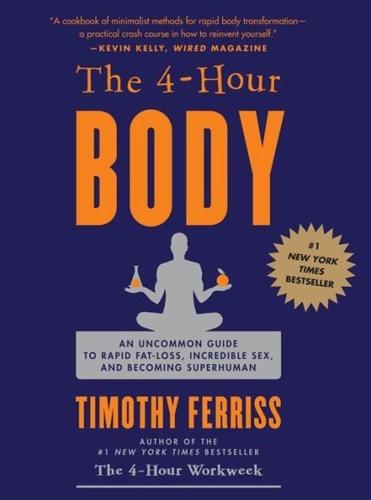
The 4-Hour Body: An Uncommon Guide to Rapid Fat-Loss, Incredible Sex, and Becoming Superhuman
by
Timothy Ferriss
Published 1 Dec 2010
YouBar Custom Protein Bars (www.fourhourbody.com/youbar) Custom design your own protein bars with YouBar, which allows you to choose protein type and dozens of add-ons like cashew butter, chia seeds, goji berries, and much more. Anyone can have their own branded (you choose the label type) protein-on-the-go for a minimum of 12 bars. For my preferred mix, search for the “Training 33” bar. Parkinson’s Law by Cyril Northcote Parkinson (www.fourhourbody.com/parkinsons) This is the seminal book on Parkinson’s Law, written by Parkinson himself. Everyone you meet will want to tell you how to train and eat. Read this hysterical book to cultivate your selective ignorance of these “bike shed” discussions, which will derail more than help. Biceps are a male obsession.
…
Nutrition Data nuts: Brazil nuts, 22.1, 46.1, 46.2 and cholesterol overeating and testosterone as travel snack O Obama, Michelle obesity, 9.1, 9.2 observer effect Occam’s Protocol adapting the program cardio frequency objective of, 18.1, 18.2 Occam’s feeding, 17.1, 18.1 Occam’s frequency Occam’s prescriptions questions and criticisms slower gains starting weights Occam’s Razor ofuro oil, rancid oligosaccharides OneTaste, 20.1, 20.2, 20.3, 20.4 oral contraceptives orange juice orgasm: and bad science clitoral glans and clitoris, 20.1, 20.2 definition of Doing Method, 20.1, 20.2, 20.3 facilitation of female focused repetition for and grounding and g-spot, 19.1, 20.1 guidelines for beginners and masturbation, 19.1, 20.1 positions practice and how-to precondition the quest questions about vibrator for O’Rourke, Dara Ottey, Merlene Joyce oversimplification Owen (monkey) oxygen-assisted static apnea Ozolin, Nikolay P Pagan, Eben PAGG warnings about Paleolithic “paleo” diet palmitoleic acid Palumbo, Dave “Jumbo,” 150, 13.1, 17.1 Parazynski, Scott Pareto, Vilfredo Pareto’s Law Parisi, Bill Parkinson’s Law partial completeness Paul (testosterone) Pavlina, Steve PC (phosphocreatine) PC (pubococcygeus) muscle Pearl, Bill pear shape peer pressure Penn, B. J. periodization Perls, Tom Phelps, Michael pheromones Phillips, Bill phlebotomy phosphocreatine (PC) phosphoric acid photos, before/after, 6.1, 6.2, 6.3 Picasso, Pablo placebo effect, 29.1, 42.1, 44.1 platelet-rich plasma (PRP) Plato, Peggy, 3.1, 16.1 Plese, Elliott plyometrics Polanyi, John policosanol, 10.1, 10.2 Poliquin, Charles, 16.1, 17.1, 22.1, 25.1, 46.1 Pollan, Michael, 43.1, 48.1 polysomnograms poo, weighing pork belly Portland Marathon Pose Method, 30.1, 30.2, 31.1 potassium Pottenger, Francis M.

Inglorious Empire: What the British Did to India
by
Shashi Tharoor
Published 1 Feb 2018
The British charges against the rulers they overthrew: Hyndman: Report on India, 1907, Ruin of India by British, pp. 513–533. ‘partly to amaze the indigenes, partly to fortify’: Jan Morris, Farewell the Trumpets: An Imperial Retreat, London: Faber & Faber, 1978. Years later, the management theorist C. Northcote Parkinson: C. Northcote Parkinson, Parkinson’s Law: The Pursuit of Progress, London: John Murray, 1958. reflected what the British writer David Cannadine dubbed ‘Ornamentalism’: David Cannadine, Ornamentalism: How the British Saw Their Empire, London: Allen Lane, 2001. ‘frivolous and sometimes vicious spendthrifts and idlers’: David Gilmour, Curzon: Imperial Statesman, New York: Farrar, Straus & Giroux, 2003.
…
Ó Gráda, Cormac, Eating People is Wrong, and Other Essays on Famine, its Past, and its Future, Princeton, NJ: Princeton University Press, 2015. Ozbudun, E. and Weiner, M. (eds), Competitive Elections in Developing Countries, Durham, NC: Duke University, 1987. Pandey, Gyanendra, The Construction of Communalism in Colonial North India, New Delhi: Oxford University Press, 1990. Parkinson, C. Northcote, Parkinson’s Law: The Pursuit of Progress, London, John Murray, 1958. Peers, D. M. and Gooptu, N. (eds), India and the British Empire, Oxford: Oxford University Press, 2012. Pernau, Margrit (ed.), Delhi College: Traditional Elites, the Colonial State and Education before 1857, New Delhi: Oxford University Press, 2006.

When Computers Can Think: The Artificial Intelligence Singularity
by
Anthony Berglas
,
William Black
,
Samantha Thalind
,
Max Scratchmann
and
Michelle Estes
Published 28 Feb 2015
Those primitive computers could perform thousands of calculations per second, and do the work of hundreds of junior engineers and clerks. Indeed, until that time a “computer” was somebody that computed things for a living, often using a mechanical adding machine or slide rule. There was much concern at the time that electronic computers would lead to mass white collar unemployment. Fortunately Parkinson’s law had already shown that bureaucratic work always grows to fill the time available, so the ever increasing needs of bureaucracies has prevented that prophecy from being realized. RK05 disk drive When this author was a student not all that long ago (he thinks), he was excited to be able to use a PDP11 computer that was a thousand times more powerful than those early machines and had the latest RK05 disk drive in it.
…
Why not 0.2%, or 35.7%? The answer is that society could not tolerate a value much higher than 2% — we would be paying taxes just to fund the tax collection process. Below 1% is easily affordable, so the bureaucracy will naturally grow beyond that size as predicted by Parkinson. One effect of Parkinson’s law on the tax office is that the complexity of the tax act has grown several orders of magnitude. In 1955, it was a fairly simple system that was easy to understand which has now become the monster that every Australian needs to deal with. The political forces that created our current monster were present back in 1955, but their effect was limited by the inability of the preautomated bureaucracy to deal with a high level of complexity.
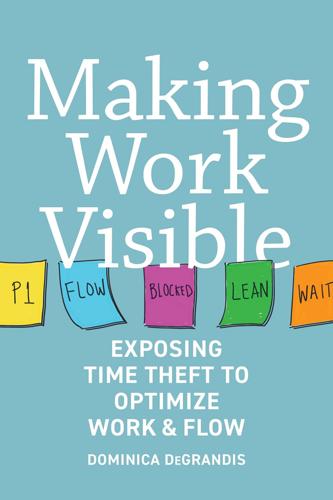
Making Work Visible: Exposing Time Theft to Optimize Workflow
by
Dominica Degrandis
and
Tonianne Demaria
Published 14 May 2017
We frame conversations about time much in the way we do money. Ostensibly “free” but nevertheless invaluable, time is arguably one of the most precious resources we have, yet one we never seem to have enough of as individuals, as teams, or as organizations. Anyone who has ever been faced with a deadline can certainly relate to Parkinson’s Law: work expands to fill the time available for its completion. Let’s be honest—when was the last time you completed quality work days or even hours ahead of deadline? You’re not alone. It seems we’re constantly doing, but doing what exactly? Why are our weeks filled with days where we return home exhausted, only to lament how we’ve barely made a dent in our to-dos?

Slow
by
Brooke McAlary
Published 22 Aug 2017
It’s a good kind of vulnerability as it removes another layer of disconnect and leaves us with conversations and people-watching, as opposed to status updates and text notifications, but it’s always humbling to realise just how normal we feel when we’re constantly connected. Set time limits Put Parkinson’s Law to the test (where a task will expand to fill the time it’s given) and give yourself a time limit for social media each day. There are numerous apps and plugins that allow you to nominate an amount of time (30 minutes a day is a good place to start) in which you’re allowed on to particular websites.

Traders, Guns & Money: Knowns and Unknowns in the Dazzling World of Derivatives
by
Satyajit Das
Published 15 Nov 2006
They are more concerned about losses than gains, leading to frequently irrational decisions. A deep-rooted fear of poverty shapes my every financial decision. People frequently spend excessive time on small decisions and an inadequate amount on larger decisions. The time taken on a decision is inversely related to the amount of money spent – Parkinson’s Law. Large expenditures, say millions of dollars on a new computer system, are approved with minimal discussion. Small expenditures, whether chocolate biscuits should be served for coffee breaks, require endless discussions. Then, there is regret. People spend an inordinate amount of time crying over spilt milk, leading to more irrational decisions.
…
However, the text is different. 6 ‘What Worries Warren’ (3 March 2003) Fortune. 13_INDEX.QXD 17/2/06 4:44 pm Page 325 Index accounting rules 139, 221, 228, 257 Accounting Standards Board 33 accrual accounting 139 active fund management 111 actuaries 107–10, 205, 289 Advance Corporation Tax 242 agency business 123–4, 129 agency theory 117 airline profits 140–1 Alaska 319 Allen, Woody 20 Allied Irish Bank 143 Allied Lyons 98 alternative investment strategies 112, 308 American Express 291 analysts, role of 62–4 anchor effect 136 Anderson, Rolf 92–4 annuities 204–5 ANZ Bank 277 Aquinas, Thomas 137 arbitrage 33, 38–40, 99, 114, 137–8, 171–2, 245–8, 253–5, 290, 293–6 arbitration 307 Argentina 45 arithmophobia 177 ‘armpit theory’ 303 Armstrong World Industries 274 arrears assets 225 Ashanti Goldfields 97–8, 114 Asian financial crisis (1997) 4, 9, 44–5, 115, 144, 166, 172, 207, 235, 245, 252, 310, 319 asset consultants 115–17, 281 ‘asset growth’ strategy 255 asset swaps 230–2 assets under management (AUM) 113–4, 117 assignment of loans 267–8 AT&T 275 attribution of earnings 148 auditors 144 Australia 222–4, 254–5, 261–2 back office functions 65–6 back-to-back loans 35, 40 backwardation 96 Banca Popolare di Intra 298 Bank of America 298, 303 Bank of International Settlements 50–1, 281 Bank of Japan 220 Bankers’ Trust (BT) 59, 72, 101–2, 149, 217–18, 232, 268–71, 298, 301, 319 banking regulations 155, 159, 162, 164, 281, 286, 288 banking services 34; see also commercial banks; investment banks bankruptcy 276–7 Banque Paribas 37–8, 232 Barclays Bank 121–2, 297–8 13_INDEX.QXD 17/2/06 326 4:44 pm Page 326 Index Baring, Peter 151 Baring Brothers 51, 143, 151–2, 155 ‘Basel 2’ proposal 159 basis risk 28, 42, 274 Bear Stearns 173 bearer eurodollar collateralized securities (BECS) 231–3 ‘behavioural finance’ 136 Berkshire Hathaway 19 Bermudan options 205, 227 Bernstein, Peter 167 binomial option pricing model 196 Bismarck, Otto von 108 Black, Fischer 22, 42, 160, 185, 189–90, 193, 195, 197, 209, 215 Black–Scholes formula for option pricing 22, 185, 194–5 Black–Scholes–Merton model 160, 189–93, 196–7 ‘black swan’ hypothesis 130 Blair, Tony 223 Bogle, John 116 Bohr, Niels 122 Bond, Sir John 148 ‘bond floor’ concept 251–4 bonding 75–6, 168, 181 bonuses 146–51, 244, 262, 284–5 Brady Commission 203 brand awareness and brand equity 124, 236 Brazil 302 Bretton Woods system 33 bribery 80, 303 British Sky Broadcasting (BSB) 247–8 Brittain, Alfred 72 broad index secured trust offerings (BISTROs) 284–5 brokers 69, 309 Brown, Robert 161 bubbles 210, 310, 319 Buconero 299 Buffet, Warren 12, 19–20, 50, 110–11, 136, 173, 246, 316 business process reorganization 72 business risk 159 Business Week 130 buy-backs 249 ‘call’ options 25, 90, 99, 101, 131, 190, 196 callable bonds 227–9, 256 capital asset pricing model (CAPM) 111 capital flow 30 capital guarantees 257–8 capital structure arbitrage 296 Capote, Truman 87 carbon trading 320 ‘carry cost’ model 188 ‘carry’ trades 131–3, 171 cash accounting 139 catastrophe bonds 212, 320 caveat emptor principle 27, 272 Cayman Islands 233–4 Cazenove (company) 152 CDO2 292 Cemex 249–50 chaos theory 209, 312 Chase Manhattan Bank 143, 299 Chicago Board Options Exchange 195 Chicago Board of Trade (CBOT) 25–6, 34 chief risk officers 177 China 23–5, 276, 302–4 China Club, Hong Kong 318 Chinese walls 249, 261, 280 chrematophobia 177 Citibank and Citigroup 37–8, 43, 71, 79, 94, 134–5, 149, 174, 238–9 Citron, Robert 124–5, 212–17 client relationships 58–9 Clinton, Bill 223 Coats, Craig 168–9 collateral requirements 215–16 collateralized bond obligations (CBOs) 282 collateralized debt obligations (CDOs) 45, 282–99 13_INDEX.QXD 17/2/06 4:44 pm Page 327 Index collateralized fund obligations (CFOs) 292 collateralized loan obligations (CLOs) 283–5, 288 commercial banks 265–7 commoditization 236 commodity collateralized obligations (CCOs) 292 commodity prices 304 Commonwealth Bank of Australia 255 compliance officers 65 computer systems 54, 155, 197–8 concentration risk 271, 287 conferences with clients 59 confidence levels 164 confidentiality 226 Conseco 279–80 contagion crises 291 contango 96 contingent conversion convertibles (co-cos) 257 contingent payment convertibles (co-pays) 257 Continental Illinois 34 ‘convergence’ trading 170 convertible bonds 250–60 correlations 163–6, 294–5; see also default correlations corruption 303 CORVUS 297 Cox, John 196–7 credit cycle 291 credit default swaps (CDSs) 271–84, 293, 299 credit derivatives 129, 150, 265–72, 282, 295, 299–300 Credit Derivatives Market Practices Committee 273, 275, 280–1 credit models 294, 296 credit ratings 256–7, 270, 287–8, 297–8, 304 credit reserves 140 credit risk 158, 265–74, 281–95, 299 327 credit spreads 114, 172–5, 296 Credit Suisse 70, 106, 167 credit trading 293–5 CRH Capital 309 critical events 164–6 Croesus 137 cross-ruffing 142 cubic splines 189 currency options 98, 218, 319 custom repackaged asset vehicles (CRAVEs) 233 daily earning at risk (DEAR) concept 160 Daiwa Bank 142 Daiwa Europe 277 Danish Oil and Natural Gas 296 data scrubbing 142 dealers, work of 87–8, 124–8, 133, 167, 206, 229–37, 262, 295–6; see also traders ‘death swap’ strategy 110 decentralization 72 decision-making, scientific 182 default correlations 270–1 defaults 277–9, 287, 291, 293, 296, 299 DEFCON scale 156–7 ‘Delta 1’ options 243 delta hedging 42, 200 Deming, W.E. 98, 101 Denmark 38 deregulation, financial 34 derivatives trading 5–6, 12–14, 18–72, 79, 88–9, 99–115, 123–31, 139–41, 150, 153, 155, 175, 184–9, 206–8, 211–14, 217–19, 230, 233, 257, 262–3, 307, 316, 319–20; see also equity derivatives Derman, Emmanuel 185, 198–9 Deutsche Bank 70, 104, 150, 247–8, 274, 277 devaluations 80–1, 89, 203–4, 319 13_INDEX.QXD 17/2/06 4:44 pm Page 328 328 Index dilution of share capital 241 DINKs 313 Disney Corporation 91–8 diversification 72, 110–11, 166, 299 dividend yield 243 ‘Dr Evil’ trade 135 dollar premium 35 downsizing 73 Drexel Burnham Lambert (DBL) 282 dual currency bonds 220–3; see also reverse dual currency bonds earthquakes, bonds linked to 212 efficient markets hypothesis 22, 31, 111, 203 electronic trading 126–30, 134 ‘embeddos’ 218 emerging markets 3–4, 44, 115, 132–3, 142, 212, 226, 297 Enron 54, 142, 250, 298 enterprise risk management (ERM) 176 equity capital management 249 equity collateralized obligations (ECOs) 292 equity derivatives 241–2, 246–9, 257–62 equity index 137–8 equity investment, retail market in 258–9 equity investors’ risk 286–8 equity options 253–4 equity swaps 247–8 euro currency 171, 206, 237 European Bank for Reconstruction and Development 297 European currency units 93 European Union 247–8 Exchange Rate Mechanism, European 204 exchangeable bonds 260 expatriate postings 81–2 expert witnesses 310–12 extrapolation 189, 205 extreme value theory 166 fads of management science 72–4 ‘fairway bonds’ 225 Fama, Eugene 22, 111, 194 ‘fat tail’ events 163–4 Federal Accounting Standards Board 266 Federal Home Loans Bank 213 Federal National Mortgage Association 213 Federal Reserve Bank 20, 173 Federal Reserve Board 132 ‘Ferraris’ 232 financial engineering 228, 230, 233, 249–50, 262, 269 Financial Services Authority (FSA), Japan 106, 238 Financial Services Authority (FSA), UK 15, 135 firewalls 235–6 firing of staff 84–5 First Interstate Ltd 34–5 ‘flat’ organizations 72 ‘flat’ positions 159 floaters 231–2; see also inverse floaters ‘flow’ trading 60–1, 129 Ford Motors 282, 296 forecasting 135–6, 190 forward contracts 24–33, 90, 97, 124, 131, 188 fugu fish 239 fund management 109–17, 286, 300 futures see forward contracts Galbraith, John Kenneth 121 gamma risk 200–2, 294 Gauss, Carl Friedrich 160–2 General Motors 279, 296 General Reinsurance 20 geometric Brownian motion (GBM) 161 Ghana 98 Gibson Greeting Cards 44 Glass-Steagall Act 34 gold borrowings 132 13_INDEX.QXD 17/2/06 4:44 pm Page 329 Index gold sales 97, 137 Goldman Sachs 34, 71, 93, 150, 173, 185 ‘golfing holiday bonds’ 224 Greenspan, Alan 6, 9, 19–21, 29, 43, 47, 50, 53, 62, 132, 159, 170, 215, 223, 308 Greenwich NatWest 298 Gross, Bill 19 Guangdong International Trust and Investment Corporation (GITIC) 276–7 guaranteed annuity option (GAO) contracts 204–5 Gutenfreund, John 168–9 gyosei shido 106 Haghani, Victor 168 Hamanaka, Yasuo 142 Hamburgische Landesbank 297 Hammersmith and Fulham, London Borough of 66–7 ‘hara-kiri’ swaps 39 Hartley, L.P. 163 Hawkins, Greg 168 ‘heaven and hell’ bonds 218 hedge funds 44, 88–9, 113–14, 167, 170–5, 200–2, 206, 253–4, 262–3, 282, 292, 296, 300, 308–9 hedge ratio 264 hedging 24–8, 31, 38–42, 60, 87–100, 184, 195–200, 205–7, 214, 221, 229, 252, 269, 281, 293–4, 310 Heisenberg, Werner 122 ‘hell bonds’ 218 Herman, Clement (‘Crem’) 45–9, 77, 84, 309 Herodotus 137, 178 high net worth individuals (HNWIs) 237–8, 286 Hilibrand, Lawrence 168 Hill Samuel 231–2 329 The Hitchhiker’s Guide to the Galaxy 189 Homer, Sidney 184 Hong Kong 9, 303–4 ‘hot tubbing’ 311–12 HSBC Bank 148 HSH Nordbank 297–8 Hudson, Kevin 102 Hufschmid, Hans 77–8 IBM 36, 218, 260 ICI 34 Iguchi, Toshihude 142 incubators 309 independent valuation 142 indexed currency option notes (ICONs) 218 India 302 Indonesia 5, 9, 19, 26, 55, 80–2, 105, 146, 219–20, 252, 305 initial public offerings 33, 64, 261 inside information and insider trading 133, 241, 248–9 insurance companies 107–10, 117, 119, 150, 192–3, 204–5, 221, 223, 282, 286, 300; see also reinsurance companies insurance law 272 Intel 260 intellectual property in financial products 226 Intercontinental Hotels Group (IHG) 285–6 International Accounting Standards 33 International Securities Market Association 106 International Swap Dealers Association (ISDA) 273, 275, 279, 281 Internet stock and the Internet boom 64, 112, 259, 261, 310, 319 interpolation of interest rates 141–2, 189 inverse floaters 46–51, 213–16, 225, 232–3 13_INDEX.QXD 17/2/06 4:44 pm Page 330 330 Index investment banks 34–8, 62, 64, 67, 71, 127–8, 172, 198, 206, 216–17, 234, 265–7, 298, 309 investment managers 43–4 investment styles 111–14 irrational decisions 136 Italy 106–7 Ito’s Lemma 194 Japan 39, 43, 82–3, 92, 94, 98–9, 101, 106, 132, 142, 145–6, 157, 212, 217–25, 228, 269–70 Jensen, Michael 117 Jett, Joseph 143 JP Morgan (company) 72, 150, 152, 160, 162, 249–50, 268–9, 284–5, 299; see also Morgan Guaranty junk bonds 231, 279, 282, 291, 296–7 JWM Associates 175 Kahneman, Daniel 136 Kaplanis, Costas 174 Kassouf, Sheen 253 Kaufman, Henry 62 Kerkorian, Kirk 296 Keynes, J.M. 167, 175, 198 Keynesianism 5 Kidder Peabody 143 Kleinwort Benson 40 Korea 9, 226, 278 Kozeny, Viktor 121 Krasker, William 168 Kreiger, Andy 319 Kyoto Protocol 320 Lavin, Jack 102 law of large numbers 192 Leeson, Nick 51, 131, 143, 151 legal opinions 47, 219–20, 235, 273–4 Leibowitz, Martin 184 Leland, Hayne 42, 202 Lend Lease Corporation 261–2 leptokurtic conditions 163 leverage 31–2, 48–50, 54, 99, 102–3, 114, 131–2, 171–5, 213–14, 247, 270–3, 291, 295, 305, 308 Lewis, Kenneth 303 Lewis, Michael 77–8 life insurance 204–5 Lintner, John 111 liquidity options 175 liquidity risk 158, 173 litigation 297–8 Ljunggren, Bernt 38–40 London Inter-Bank Offered Rate (LIBOR) 6, 37 ‘long first coupon’ strategy 39 Long Term Capital Management (LTCM) 44, 51, 62, 77–8, 84, 114, 166–75, 187, 206, 210, 215–18, 263–4, 309–10 Long Term Credit Bank of Japan 94 LOR (company) 202 Louisiana Purchase 319 low exercise price options (LEPOs) 261 Maastricht Treaty and criteria 106–7 McLuhan, Marshall 134 McNamara, Robert 182 macro-economic indicators, derivatives linked to 319 Mahathir Mohammed 31 Malaysia 9 management consultants 72–3 Manchester United 152 mandatory convertibles 255 Marakanond, Rerngchai 302 margin calls 97–8, 175 ‘market neutral’ investment strategy 114 market risk 158, 173, 265 marketable eurodollar collateralized securities (MECS) 232 Markowitz, Harry 110 mark-to-market accounting 10, 100, 139–41, 145, 150, 174, 215–16, 228, 244, 266, 292, 295, 298 Marx, Groucho 24, 57, 67, 117, 308 13_INDEX.QXD 17/2/06 4:44 pm Page 331 Index mathematics applied to financial instruments 209–10; see also ‘quants’ matrix structures 72 Meckling, Herbert 117 Melamed, Leo 34, 211 merchant banks 38 Meriwether, John 167–9, 172–5 Merrill Lynch 124, 150, 217, 232 Merton, Robert 22, 42, 168–70, 175, 185, 189–90, 193–7, 210 Messier, Marie 247 Metallgesellschaft 95–7 Mexico 44 mezzanine finance 285–8, 291–7 MG Refining and Marketing 95–8, 114 Microsoft 53 Mill, Stuart 130 Miller, Merton 22, 101, 194 Milliken, Michael 282 Ministry of Finance, Japan 222 misogyny 75–7 mis-selling 238, 297–8 Mitchell, Edison 70 Mitchell & Butler 275–6 models financial 42–3, 141–2, 163–4, 173–5, 181–4, 189, 198–9, 205–10 of business processes 73–5 see also credit models Modest, David 168 momentum investment 111 monetization 260–1 monopolies in financial trading 124 moral hazard 151, 280, 291 Morgan Guaranty 37–8, 221, 232 Morgan Stanley 76, 150 mortgage-backed securities (MBSs) 282–3 Moscow, City of 277 moves of staff between firms 150, 244 Mozer, Paul 169 Mullins, David 168–70 multi-skilling 73 331 Mumbai 3 Murdoch, Rupert 247 Nabisco 220 Napoleon 113 NASDAQ index 64, 112 Nash, Ogden 306 National Australia Bank 144, 178 National Rifle Association 29 NatWest Bank 144–5, 198 Niederhoffer, Victor 130 ‘Nero’ 7, 31, 45–9, 60, 77, 82–3, 88–9, 110, 118–19, 125, 128, 292 NERVA 297 New Zealand 319 Newman, Frank 104 news, financial 133–4 News Corporation 247 Newton, Isaac 162, 210 Nippon Credit Bank 106, 271 Nixon, Richard 33 Nomura Securities 218 normal distribution 160–3, 193, 199 Northern Electric 248 O’Brien, John 202 Occam, William 188 off-balance sheet transactions 32–3, 99, 234, 273, 282 ‘offsites’ 74–5 oil prices 30, 33, 89–90, 95–7 ‘omitted variable’ bias 209–10 operational risk 158, 176 opinion shopping 47 options 9, 21–2, 25–6, 32, 42, 90, 98, 124, 197, 229 pricing 185, 189–98, 202 Orange County 16, 44, 50, 124–57, 212–17, 232–3 orphan subsidiaries 234 over-the-counter (OTC) market 26, 34, 53, 95, 124, 126 overvaluation 64 13_INDEX.QXD 17/2/06 4:44 pm Page 332 332 Index ‘overwhelming force’ strategy 134–5 Owen, Martin 145 ownership, ‘legal’ and ‘economic’ 247 parallel loans 35 pari-mutuel auction system 319 Parkinson’s Law 136 Parmalat 250, 298–9 Partnoy, Frank 87 pension funds 43, 108–10, 115, 204–5, 255 People’s Bank of China (PBOC) 276–7 Peters’ Principle 71 petrodollars 71 Pétrus (restaurant) 121 Philippines, the 9 phobophobia 177 Piga, Gustavo 106 PIMCO 19 Plaza Accord 38, 94, 99, 220 plutophobia 177 pollution quotas 320 ‘portable alpha’ strategy 115 portfolio insurance 112, 202–3, 294 power reverse dual currency (PRDC) bonds 226–30 PowerPoint 75 preferred exchangeable resettable listed shares (PERLS) 255 presentations of business models 75 to clients 57, 185 prime brokerage 309 Prince, Charles 238 privatization 205 privity of contract 273 Proctor & Gamble (P&G) 44, 101–4, 155, 298, 301 product disclosure statements (PDSs) 48–9 profit smoothing 140 ‘programme’ issuers 234–5 proprietary (‘prop’) trading 60, 62, 64, 130, 174, 254 publicly available information (PAI) 277 ‘puff’ effect 148 purchasing power parity theory 92 ‘put’ options 90, 131, 256 ‘quants’ 183–9, 198, 208, 294 Raabe, Matthew 217 Ramsay, Gordon 121 range notes 225 real estate 91, 219 regulatory arbitrage 33 reinsurance companies 288–9 ‘relative value’ trading 131, 170–1, 310 Reliance Insurance 91–2 repackaging (‘repack’) business 230–6, 282, 290 replication in option pricing 195–9, 202 dynamic 200 research provided to clients 58, 62–4, 184 reserves, use of 140 reset preference shares 254–7 restructuring of loans 279–81 retail equity products 258–9 reverse convertibles 258–9 reverse dual currency bonds 223–30 ‘revolver’ loans 284–5 risk, financial, types of 158 risk adjusted return on capital (RAROC) 268, 290 risk conservation principle 229–30 risk management 65, 153–79, 184, 187, 201, 267 risk models 163–4, 173–5 riskless portfolios 196–7 RJ Reynolds (company) 220–1 rogue traders 176, 313–16 Rosenfield, Eric 168 Ross, Stephen 196–7, 202 Roth, Don 38 Rothschild, Mayer Amshel 267 Royal Bank of Scotland 298 Rubinstein, Mark 42, 196–7 13_INDEX.QXD 17/2/06 4:44 pm Page 333 Index Rumsfeld, Donald 12, 134, 306 Rusnak, John 143 Russia 45, 80, 166, 172–3, 274, 302 sales staff 55–60, 64–5, 125, 129, 217 Salomon Brothers 20, 36, 54, 62, 167–9, 174, 184 Sandor, Richard 34 Sanford, Charles 72, 269 Sanford, Eugene 269 Schieffelin, Allison 76 Scholes, Myron 22, 42, 168–71, 175, 185, 189–90, 193–7, 263–4 Seagram Group 247 Securities and Exchange Commission, US 64, 304 Securities and Futures Authority, UK 249 securitization 282–90 ‘security design’ 254–7 self-regulation 155 sex discrimination 76 share options 250–1 Sharpe, William 111 short selling 30–1, 114 Singapore 9 single-tranche CDOs 293–4, 299 ‘Sisters of Perpetual Ecstasy’ 234 SITCOMs 313 Six Continents (6C) 275–6 ‘smile’ effect 145 ‘snake’ currency system 203 ‘softing’ arrangements 117 Solon 137 Soros, George 44, 130, 253, 318–19 South Sea Bubble 210 special purpose asset repackaging companies (SPARCs) 233 special purpose vehicles (SPVs) 231–4, 282–6, 290, 293 speculation 29–31, 42, 67, 87, 108, 130 ‘spinning’ 64 333 Spitzer, Eliot 64 spread 41, 103; see also credit spreads stack hedges 96 Stamenson, Michael 124–5 standard deviation 161, 193, 195, 199 Steinberg, Sol 91 stock market booms 258, 260 stock market crashes 42–3, 168, 203, 257, 259, 319 straddles or strangles 131 strategy in banking 70 stress testing 164–6 stripping of convertible bonds 253–4 structured investment products 44, 112, 115, 118, 128, 211–39, 298 structured note asset packages (SNAPs) 233 Stuart SC 18, 307, 316–18 Styblo Bleder, Tanya 153 Suharto, Thojib 81–2 Sumitomo Corporation 100, 142 Sun Tzu 61 Svensk Exportkredit (SEK) 38–9 swaps 5–10, 26, 35–40, 107, 188, 211; see also equity swaps ‘swaptions’ 205–6 Swiss Bank Corporation (SBC) 248–9 Swiss banks 108, 305 ‘Swiss cheese theory’ 176 synthetic securitization 284–5, 288–90 systemic risk 151 Takeover Panel 248–9 Taleb, Nassim 130, 136, 167 target redemption notes 225–6 tax and tax credits 171, 242–7, 260–3 Taylor, Frederick 98, 101 team-building exercises 76 team moves 149 technical analysis 60–1, 135 television programmes about money 53, 62–3 Thailand 9, 80, 302–5 13_INDEX.QXD 17/2/06 4:44 pm Page 334 334 Index Thatcher, Margaret 205 Thorp, Edward 253 tobashi trades 105–7 Tokyo Disneyland 92, 212 top managers 72–3 total return swaps 246–8, 269 tracking error 138 traders in financial products 59–65, 129–31, 135–6, 140, 148, 151, 168, 185–6, 198; see also dealers trading limits 42, 157, 201 trading rooms 53–4, 64, 68, 75–7, 184–7, 208 Trafalgar House 248 tranching 286–9, 292, 296 transparency 26, 117, 126, 129–30, 310 Treynor, Jack 111 trust investment enhanced return securities (TIERS) 216, 233 trust obligation participating securities (TOPS) 232 TXU Europe 279 UBS Global Asset Management 110, 150, 263–4, 274 uncertainty principle 122–3 unique selling propositions 118 unit trusts 109 university education 187 unspecified fund obligations (UFOs) 292 ‘upfronting’ of income 139, 151 Valéry, Paul 163 valuation 64, 142–6 value at risk (VAR) concept 160–7, 173 value investing 111 Vanguard 116 vanity bonds 230 variance 161 Vietnam War 182, 195 Virgin Islands 233–4 Vivendi 247–8 volatility of bond prices 197 of interest rates 144–5 of share prices 161–8, 172–5, 192–3, 199 Volcker, Paul 20, 33 ‘warehouses’ 40–2, 139 warrants arbitrage 99–101 weather, bonds linked to 212, 320 Weatherstone, Dennis 72, 268 Weil, Gotscal & Manges 298 Weill, Sandy 174 Westdeutsche Genosenschafts Zentralbank 143 Westminster Group 34–5 Westpac 261–2 Wheat, Allen 70, 72, 106, 167 Wojniflower, Albert 62 World Bank 4, 36, 38 World Food Programme 320 Worldcom 250, 298 Wriston, Walter 71 WTI (West Texas Intermediate) contracts 28–30 yield curves 103, 188–9, 213, 215 yield enhancement 112, 213, 269 ‘yield hogs’ 43 zaiteku 98–101, 104–5 zero coupon bonds 221–2, 257–8

A Short History of Progress
by
Ronald Wright
Published 2 Jan 2004
While these caused manpower and fiscal problems, they may also have postponed the empire’s decline by relieving pressure on the land. Explanations for Rome’s fall run the gamut — plagues, lead poisoning, mad emperors, corruption, barbarians, Christianity — and Joseph Tainter, in his book on social collapses, has added Parkinson’s Law. Complex systems, he argues, inevitably succumb to diminishing returns. Even if other things remain equal, the costs of running and defending an empire eventually grow so burdensome that it becomes more efficient to throw off the whole imperial superstructure and revert to local forms of organization.
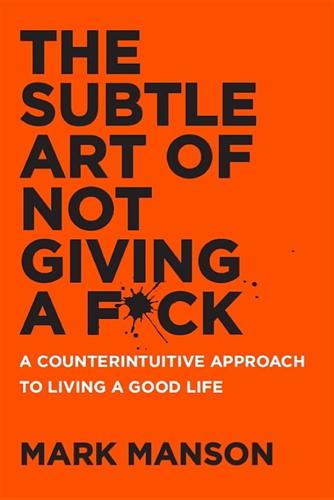
The Subtle Art of Not Giving a F*ck: A Counterintuitive Approach to Living a Good Life
by
Mark Manson
Published 12 Sep 2016
We must intellectually strip them away, see their faults and biases, see how they don’t fit in with much of the rest of the world, to stare our own ignorance in the face and concede, because our own ignorance is greater than us all. Manson’s Law of Avoidance Chances are you’ve heard some form of Parkinson’s law: “Work expands so as to fill up the time available for its completion.” You’ve also undoubtedly heard of Murphy’s law: “Whatever can go wrong will go wrong.” Well, next time you’re at a swanky cocktail party and you want to impress somebody, try dropping Manson’s law of avoidance on them: The more something threatens your identity, the more you will avoid it.
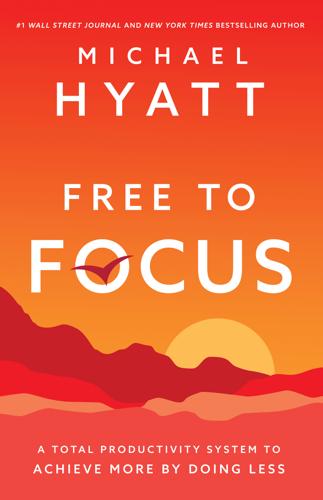
Free to Focus: A Total Productivity System to Achieve More by Doing Less
by
Michael Hyatt
Published 8 Apr 2019
Factoring an hour for lunch and a nap in the middle of the day, that is a forty-hour workweek. With the lessons we’ll cover in the next chapter, you’ll see that’s plenty to accomplish my key goals and projects. When will you start and when will you finish? Setting limits on your workday is foundational to productivity. We know from Parkinson’s Law that work expands to fill the available time; the lesson for us is that we must limit the availability or it will balloon into the early morning and late evenings. Suddenly you’re skipping breakfast and eating takeout at your desk at 7:30 p.m., and as we know from the research on overwork, there’s no payoff for those extra hours.
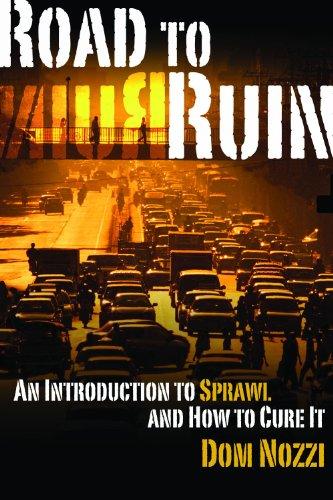
Road to ruin: an introduction to sprawl and how to cure it
by
Dom Nozzi
Published 15 Dec 2003
In the long run, generated traffic can consume from 50 to 90 percent of added capacity due to road widenings.17 The Southern California Association of Governments estimated some years back that even if a state car club realized its desire to have 19 new expressways built in southern California, traffic in 20 years will still move at an average speed of 25 mph, less than the current speed of 31 mph.18 Widening roads bumps into “Parkinson’s Law of Traffic: Traffic expands to fill the available road space.”19 Moore and Thorsnes make the point that “no rational concert promoter would decide how big to build a stadium based on the number of people who would come to see the Grateful Dead if the tickets were free. But that is often how transportation planners decide how [big to build a road]: they estimate how many trips would be made on an unpriced [free] facility, then try to build a [road] big enough to accommodate that number of trips.”20 Often, we justify the “need” for wider roads by pointing to gas savings and air emissions reductions.
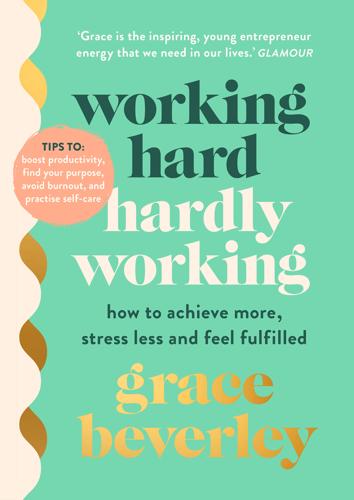
Working Hard, Hardly Working
by
Grace Beverley
It never feels like I’m procrastinating when I’m engaging in time off that I’ve planned and given myself permission to take. Fuck-it time off just won’t give you that same relief of knowing you have that permission. In addition, you will find yourself working with that planned time off in mind, meaning you’ll finish things in advance, and it’s such a relief not having those tasks hanging over you. Parkinson’s Law states that work will expand to fill whatever time you give it, so setting boundaries and having designated time off is important, for efficiency’s sake as well as your wellbeing. Having said that, both types of doing nothing are a condition of us being human, and we need to be able to know when to say fuck it, I need a rest.

What's Mine Is Yours: How Collaborative Consumption Is Changing the Way We Live
by
Rachel Botsman
and
Roo Rogers
Published 2 Jan 2010
By the early 1990s, American families had, on average, twice as many possessions as they did twenty-five years earlier.32 So much stuff has been bought that it doesn’t fit into our homes anymore, and so we rent storage to extend the capacity to own more things. Just as Cyril Northcote Parkinson, a British civil servant, mused in the Economist in 1955 that “Work expands so as to fill the time available for completion,” many of us fall victim to Parkinson’s Law when it comes to storage: more space increases our tendency to acquire more stuff. Just as plastic migrates to the Great Pacific Garbage Patch, these things get stored away, out-of-sight, out-of-mind. If you’ve ever traveled from an airport into a city, say London or New York, and noticed the abundance of self-storage warehouses along the route, you begin to see the extent of the problem.
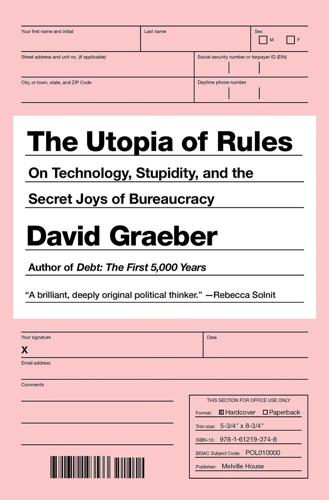
Bureaucracy
by
David Graeber
Published 3 Feb 2015
But in the middle of the last century, particularly in the late sixties and early seventies, the word was everywhere. There were sociological tomes with grandiose titles like A General Theory of Bureaucracy,1 The Politics of Bureaucracy,2 or even The Bureaucratization of the World,3 and popular paperback screeds with titles like Parkinson’s Law,4 The Peter Principle,5 or Bureaucrats: How to Annoy Them.6 There were Kafkaesque novels, and satirical films. Everyone seemed to feel that the foibles and absurdities of bureaucratic life and bureaucratic procedures were one of the defining features of modern existence, and as such, eminently worth discussing.
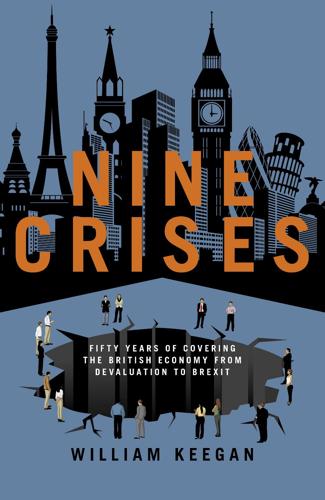
Nine Crises: Fifty Years of Covering the British Economy From Devaluation to Brexit
by
William Keegan
Published 24 Jan 2019
Sir John subsequently became a television star with a programme that involved visiting British companies and telling them in no uncertain terms what they were doing wrong. He never went to university himself but relished becoming Chancellor of Bradford University. He once told me that the greatest influence on his career had been ‘Professor Parkinson’. It was Professor C. Northcote Parkinson – an eminently memorable name – who went down in history with Parkinson’s Law: ‘Work expands so as to fill the time available for its completion.’ Unfortunately, the Thatcher government, while ostensibly obsessed with the work ethic, became past masters in pursuing economic policies that put millions of people out of work. In its early days I was invited to meet the Secretary of State for Employment, Jim Prior, in his office opposite St James’s Park Station.
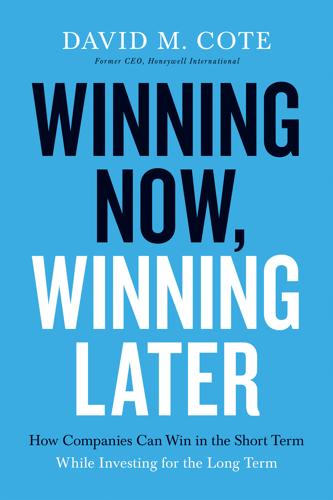
Winning Now, Winning Later
by
David M. Cote
Published 17 Apr 2020
Just because a team reaches consensus on an issue doesn’t mean a decision will actually be implemented. Be clear what the follow-up action is, and when it comes to the “who,” never accept “the team” as an answer. You want the name of someone who will stay awake nights to make sure the required work gets done. On “when,” remember Parkinson’s law, which says that work expands to fill the time allotted. Don’t be afraid to create tight timelines, because sometimes the culture demands them. In one instance, I asked a finance person when they could perform a task for me. Clearly not used to being asked, the person responded, “Two weeks.” Pointing to my watch, I said, “What time today?”

The Chip: How Two Americans Invented the Microchip and Launched a Revolution
by
T. R. Reid
Published 18 Dec 2007
Intel rang up a grand total of $2,672 in sales that first year. By 1973, when the 4K RAM came to market, the firm’s sales topped $60 million, and Texas Instruments and several other firms had jumped into the memory business as well. Like most other fields of human endeavor, the computer world has its own version of Parkinson’s Law. It is sometimes stated in pure Parkinsonian terms—“Data expands to fill the memory available to hold it”—and sometimes in plainer language—“There’s no such thing as enough memory.” For computer buffs, using one bank of memory is like eating one peanut. The computer business turned out to have a voracious appetite for cheap, fast random-access memory, and the semiconductor business geared up to meet the need.

Garbage Land: On the Secret Trail of Trash
by
Elizabeth Royte
Published 1 Jan 2005
But I didn’t have a garden in which to use the finished product, and cultivating rotting food outside my brownstone would surely alienate my neighbors. Or so I thought at the time. As the Garbage Project discovered, “Garbage expands so as to fill the receptacles available for its containment.” (Project researchers called this Parkinson’s Law of Garbage, after the original law formulated by C. Northcote Parkinson, a British civil servant based in Singapore: “Work expands so as to fill the time available for its completion.”) My house had one trash can in the kitchen, a tiny one in the bathroom, and two more in bedrooms. By making it easy to toss things away, was I was abetting garbage mindlessness?

Godforsaken Sea
by
Derek Lundy
Published 15 Feb 1998
It would restrict the chances of disaster to the realm of freaky luck: a rogue wave; an invisible flaw in the rigging; a slip overboard off a slick, icy deck; an unseen growler ripping its way through the lightweight inch-thick hull. The skippers and their support teams swarmed the boats, trying to reach the purely theoretical end of the list of things to do before the imminent start. It is an axiom of long-distance sailboat racing (a kind of nautical Parkinson’s Law) that the amount of work left to do always exceeds the time available in which to do it. There is always something else to attach to the boat, gear to stow, food to pack away, electronic devices to program. Weaknesses that had turned up here and there in the course of qualifying sails or sea trials—in a block (the pulleys on board a boat that assist in handling lines) or a sail, perhaps even in the structural solidity of the boat—still needed attending.
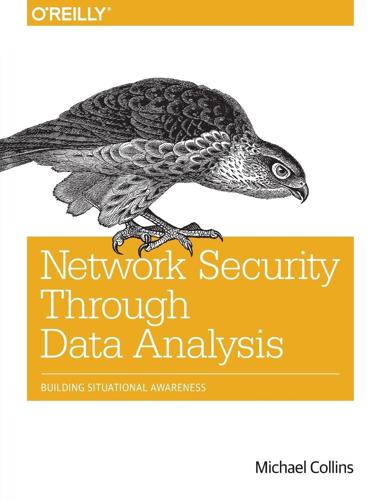
Network Security Through Data Analysis: Building Situational Awareness
by
Michael S Collins
Published 23 Feb 2014
For example, although it’s always a good (and necessary) goal to minimize false positives, analysts will take a more nuanced approach to this problem. For example, if there’s a temporary risk of a nasty attack, an analyst will often tolerate a higher false positive rate in order to more effectively defend against that attack. There’s a sort of Parkinson’s Law problem here. All of our detection and monitoring systems provide only partial coverage because the Internet is weird, and we don’t really have a good grasp of what we’re missing. As any floor improves its detection process, it will find that there are newer and nastier alerts to consider. To paraphrase Donald Rumsfeld: we do have a problem with unknown unknowns.
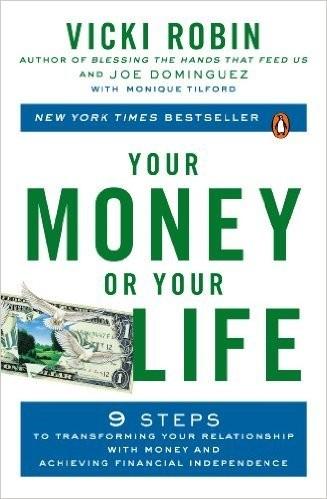
Your Money or Your Life: 9 Steps to Transforming Your Relationship With Money and Achieving Financial Independence: Revised and Updated for the 21st Century
by
Vicki Robin
,
Joe Dominguez
and
Monique Tilford
Published 31 Aug 1992
We’re not saying you should buy only things that are on your premeditated shopping list (although that isn’t such a bad idea for compulsive shoppers); we are saying that you must be scrupulously honest when you’re out and about. Saying, “I anticipate needing this,” as you’re drooling over a left-handed veeblefitzer or cashmere sweater is not the same as having already anticipated needing one and recognizing that this particular one is a bargain. Remember the corollary to Parkinson’s Law (“The work expands to fit the time allowed for its completion”): “Needs expand to encompass whatever you want to buy on impulse.” 7. Research Value, Quality, Durability, Multiple Use and Price Research your purchases. The print and online editions of Consumer Reports and other Web sites and publications give excellent evaluations and comparisons of almost everything you might buy—and they can be fun just to read.

On Her Majesty's Nuclear Service
by
Eric Thompson
Published 18 Apr 2018
Journal: ‘One thing is immediately apparent; the ship is being manned by dockyard mateys and sailors. The sailors work hard and take pride in the ship while the dockyard mateys spend their days drinking tea, reading newspapers, playing cards and watching the sailors work. It is no coincidence that Parkinson’s Law – Work expands to fill the time available – was first observed in a Royal Dockyard. Professor Parkinson was an Admiralty Civil Servant.’ Mentor’s comment: This page is for sketches. Journal: ‘A British sailor is a man of whom the country can be proud. On the treatment of him: 1. Remember he is a human being living under difficult conditions. 2.

Androids: The Team That Built the Android Operating System
by
Chet Haase
Published 12 Aug 2021
Debugging tools have come a long way since the early days of software, but the println() approach ignored all of those advancements and went right back to the painful start. 272 Intents are Android’s system of launching other applications based on actions requested by an application, like “take a picture” bringing up the camera app, or “send a message” launching a messaging app. 273 Bike shedding is a phrase often used in software engineering to describe the process of spending way too much time working on something that probably doesn’t matter that much. Wikipedia equates it with Parkinson’s Law of Triviality, exemplified by a committee formed to discuss plans for a nuclear power plant instead spending most of its time discussing the color to paint the staff’s bike shed. In this case, it really was bikeshedding, because besides spending a lot of time discussing it, they actually decided in the end to use the initial proposal (Intents) which came from an earlier incarnation of the idea at PalmSource. 274 The amount of time and effort spent on API names seems ridiculous from the outside, but to API developers it makes sense.
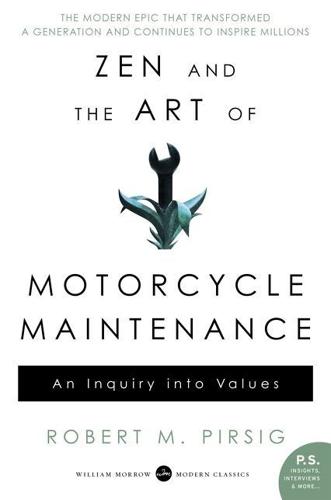
Zen and the Art of Motorcycle Maintenance: An Inquiry Into Values
by
Robert M. Pirsig
Published 1 Jan 1974
As he was testing hypothesis number one by experimental method a flood of other hypotheses would come to mind, and as he was testing these, some more came to mind, and as he was testing these, still more came to mind until it became painfully evident that as he continued testing hypotheses and eliminating them or confirming them their number did not decrease. It actually increased as he went along. At first he found it amusing. He coined a law intended to have the humor of a Parkinsons law that “The number of rational hypotheses that can explain any given phenomenon is infinite.” It pleased him never to run out of hypotheses. Even when his experimental work seemed dead-end in every conceivable way, he knew that if he just sat down and muddled about it long enough, sure enough, another hypothesis would come along.

The Streets Were Paved With Gold
by
Ken Auletta
Published 14 Jul 1980
The mood of the country shifted—Nixon did, after all, carry every state but one in 1972. Much of the federal spending was wasteful, and the public wised up. And, one suspects, federal spending could have soared and New York would still be in trouble because local spending would have tried to keep pace. Parkinson’s law—work expands to fill available space—has its home in New York. In this sense, New York, not just Nixon, is to blame. New York refused to adjust to the new nogrowth federal reality. And, as we will see, it did not adjust to the reality of its own declining economy. Ignoring the City’s Economy “How would you like to be remembered?”

Construction Project Management
by
S. Keoki Sears
Published 7 Feb 2015
Nor is the job logic truly as rigid as it is made out to be. Craft workers are shifted about from one activity to another as they are needed. The daily fluctuations shown in Chart 8.2 for laborers will not really occur during the construction period. A relatively stable labor crew of five or six workers will be on hand throughout the job. A form of Parkinson’s Law, which says that work expands so as to fill the time available for its completion, takes effect, and every worker is kept busy, even when more laborers are present on a given day than Chart 8.2 indicates actually would be needed. Manpower leveling, using present‐day algorithms, is a trial‐and‐error process and is made difficult by the fact that most activities use more than one labor classification as well as different types of equipment.
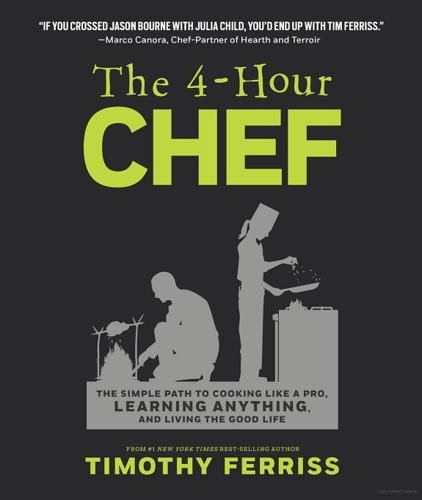
The 4-Hour Chef: The Simple Path to Cooking Like a Pro, Learning Anything, and Living the Good Life
by
Timothy Ferriss
Published 1 Jan 2012
THE HOLY GRAIL OF THE ONE-PAGER The easiest way to avoid being overwhelmed is to create positive constraints: put up walls that dramatically restrict whatever it is that you’re trying to do. In the world of work, a task will swell in complexity to fill the time you allot it, a phenomenon often referred to as Parkinson’s Law. How does so much get done just before you leave for holidays? All the items lingering on your to-do list for weeks or months? It’s the power of the clear and imminent deadline. Though vastly simplified, in the world of cooking, Le Chatelier’s Principle is invoked to remember that a gas will expand to fill the size of its container.
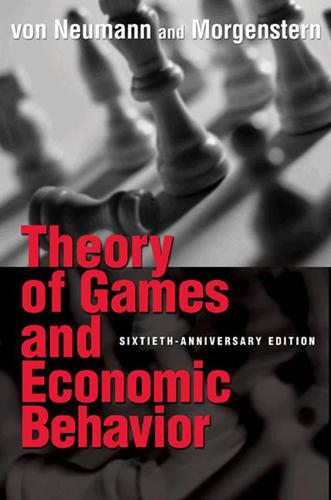
Theory of Games and Economic Behavior: 60th Anniversary Commemorative Edition (Princeton Classic Editions)
by
John von Neumann
and
Oskar Morgenstern
Published 19 Mar 2007
Von Neumann’s approach fails because it controverts a Great Natural Law, as follows: If you have to add numbers to get the answer to anything, you will never get it right. . . . . . Also, anything that has to have its square root taken is already in pretty shaky shape. You’d better discard it and go on to something else. . . . . . All life is governed by certain Great Natural Laws like the one—Parkinson’s Law, we think—which goes: “If you keep fooling around something, sooner or later it will come off.” The root Great Natural Law for successful predictions is as follows: Things which are caused by something are really caused by something else. Let us forecast what you will have for dinner. What are the causative factors?
…
See also Strategy Optimum Optimum behavior Order of society. See also Organization; Standards of behavior Ordering complete partial well Oreographical saddles Organization social, complexity of social and economic Origin (point in space) Outside source Overbids. See also Poker Parallelism of interests Pareto, V. Parkinson’s Law Parsons, Talcott Partial ordering. See also Ordering Participants Partition decomposition logistic interpretation Passes Passing, in poker Patience Pauli, Wolfgang Penny matching. See Matching Pennies Per absurdum proof Perfect competition Perfect recall Permutation cyclic Persian poetry Perturbations Peston, Maurice Physical sciences Physics Planning Plateau, rectangular Plausibility considerations Play actual course of individual identity of outcome of sequence of choices value of Player: chief chief, segregated composite defeated discriminated excluded fictitious found out indifferent isolated privileged segregated self-contained splitting the unprivileged victorious Players: interchanging of permutation of privileged group of removable sets of strategies of (see also Strategy) Playing appropriately Plays, set of all Poker bids in bluffing in draw poker general forms of good strategy in interpretation of the solutions mathematical description of all solutions as a model of strategy overbidding in passing in probabilities for hands in seeing solution strategy in stud poker Political science Popper, Karl Position Positive octant Positive quadrant Postulates.

A History of Modern Britain
by
Andrew Marr
Published 2 Jul 2009
Labour’s Welfare State would require hundreds of thousands of new white-collar jobs, administering national insurance, teaching, running the health service. Even the Colonial Office vastly expanded its staff as the colonies disappeared, giving one of its officials, C. Northcote Parkinson, the idea for ‘Parkinson’s Law’ – that work expands to fill the time available. Studies of social mobility, such as the major one carried out in 1949, are notoriously crude and have to be taken with a pinch of salt. But they suggest that while working-class sons generally followed their fathers into similar jobs, there was much more variation among middle-class children.

The Sovereign Individual: How to Survive and Thrive During the Collapse of the Welfare State
by
James Dale Davidson
and
William Rees-Mogg
Published 3 Feb 1997
Ibid., p.95. 16. Jbid., p.90. 17. Ibid., p.87. 18. Norman Cohn, The Pursuit of the Millennium: Revolutionary Millenarians and Mystical Anarchists of the Middle Ages, revised and expanded edition (Oxford: Oxford University Press, 1970), p.127. 19. Ibid. 20. Ibij, p.128. 21. C. Northcote Parkinson, Parkinson s" Law and Other Studies in Administration (Boston: Houghton Mifflin, 1957), p.60, quoted in Tilly, p.4. 22. van Creveld, op. cit., p.50. 23. Playfair, op. cit., p.72. 24. Huizinga, op. ciL, p.26. 25. Ibid., p.57. 26. Ibid. 27. Frederic C. Lane, Venice: A Maritime Republic (Baltimore: Johns Hopkins University Press, 1973), p.275. 28.
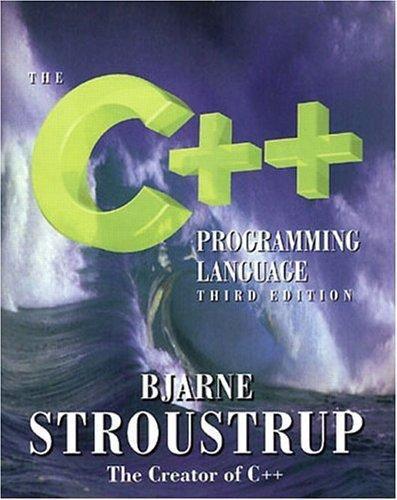
The C++ Programming Language
by
Bjarne Stroustrup
Published 2 Jan 1986
Prentice-Hall. 1995. ISBN 0-13-203837-4. Shows how to go from a problem to C++ code in a fairly systematic way. Presents alternative designs and principles for choosing between them. More practical and more concrete than most books on design. Contains extensive C++ code examples. C. N. Parkinson: Parkinson’s Law and other Studies in Administration. Houghton Mifflin. Boston. 1957. One of the funniest and most cutting descriptions of disasters caused by administrative processes. Bertrand Meyer: Object Oriented Software Construction. Prentice Hall. 1988. Pages 1-64 and 323-334 give a good introduction to one view of object-oriented programming and design with many sound pieces of practical advice.

Engineering Security
by
Peter Gutmann
Arsenault, Joanna Bresee, Nitin Gupta, Iulia Ion, Christina Johns, Daniel Lee, Yuan Liang, Jenny Olsen, Brandon Salmon, Richard Shay, Kami Vaniea, Lujo Bauer, Lorrie Faith Cranor, Gregory Ganger and Michael Reiter, Proceedings of the 28th Conference on Human Factors in Computing Systems (CHI’10), April 2010, p.645. [143] “Parkinson’s Law”, C.Northcote Parkinson, Houghton Mifflin, 1957. [144] “Building Systems to Be Shared, Securely”, Poul-Henning Kamp and Robert Watson, ACM Queue, Vol.2, No.5 (July/August 2004), p.42. [145] “Getting Real: The smarter, faster, easier way to build a successful web application”, Jason Fried, Heinemeier Hansson and Matthew Linderman, 37Signals, 2009. [146] “Free software UI”, Havoc Pennington, April 2002, http://ometer.com/free-software-ui.html. [147] “Checkboxes that kill your product”, Alex Limi, 18 March 2013, http://limi.net/checkboxes-that-kill. [148] “Say NO by default”, Derek Sivers, 7 August 2004, http://www.oreillynet.com/onlamp/blog/2004/08/say_no_by_default.html